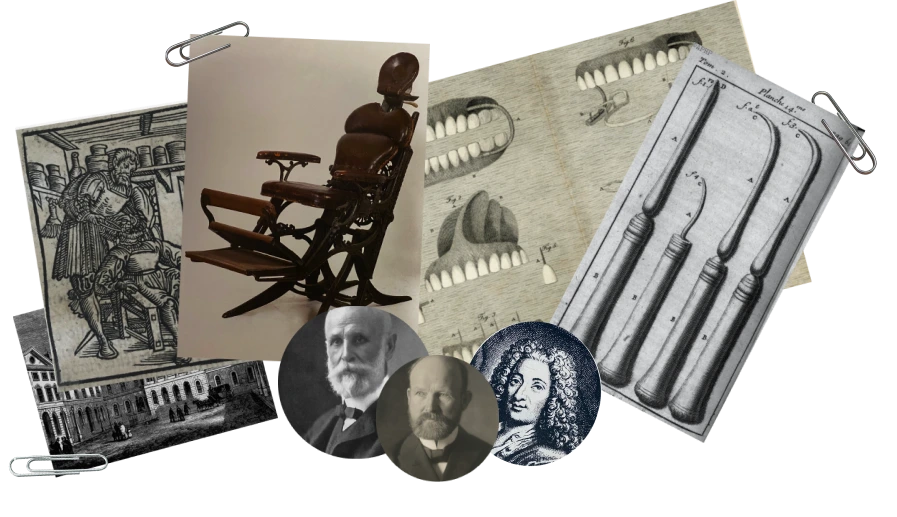
Timeline of the History of Dentistry
Discover the evolution of dentistry through more than 13,000 years, from the earliest attempts to alleviate dental pain and discomfort to the groundbreaking achievement of regrowing teeth in a Petri dish. Explore the 75 pivotal milestones in this remarkable journey.
More Information: Illustrated Encyclopedia of the History of Dentistry11,000 BCE
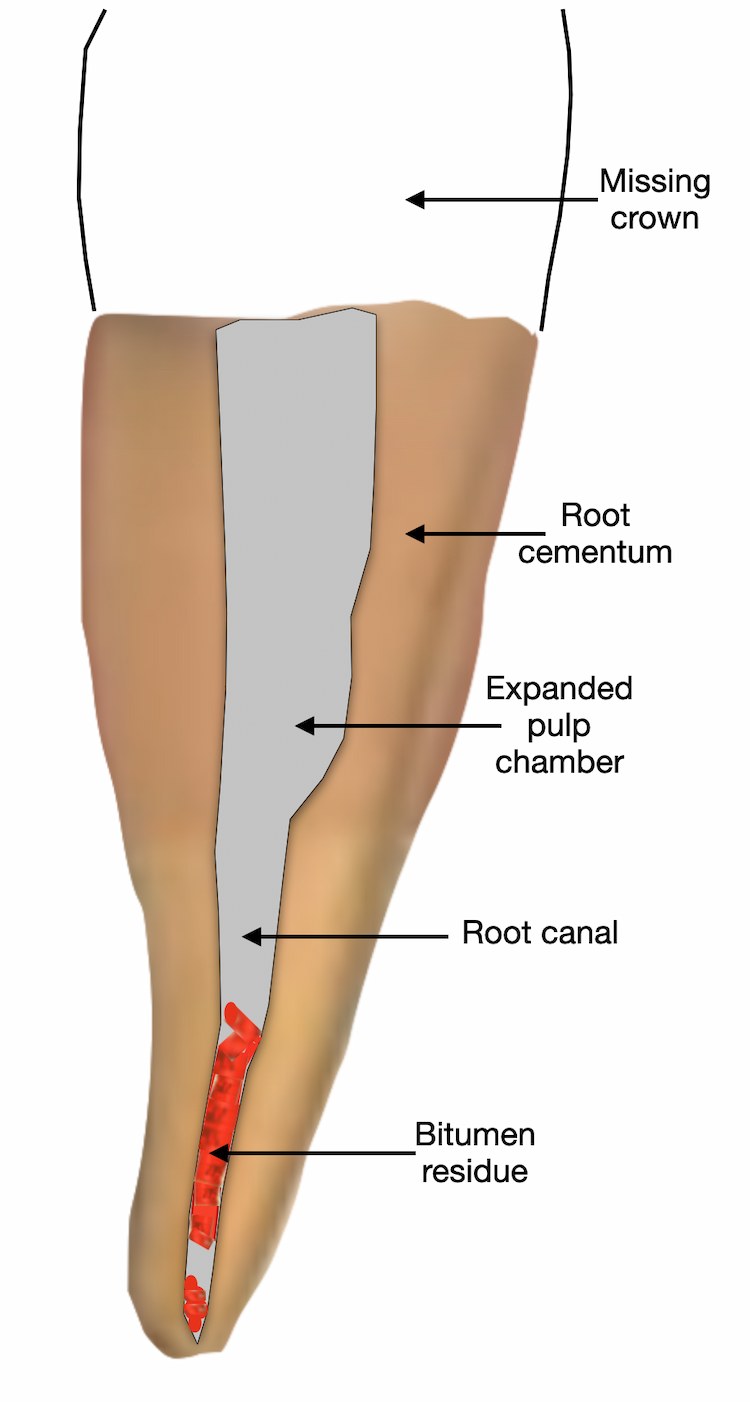
The earliest evidence of dental intervention
Note the enlargement of a root canal (pulp chamber) with a tool and filling with a residue containing bitumen, vegetable fibers, and hair.
The image was redrawn based on Figure 1 from Oxilia et al. 2017. https://doi.org/10.1002/ ajpa.23216
7,000 BCE

7,000 BCE
The earliest evidence of dental drilling using a stone flint
Item was found in a Pakistani graveyard. Drawing of a bow drill with a flintstone bit likely used to drill the surface of a tooth to render it less retentive. Right bow drill exhibited at the British Museum.
(Image in Creative Commons). Reference: Coppa, A. et al. 2006. https://doi.org/10.1038/440755a
4,500 BCE
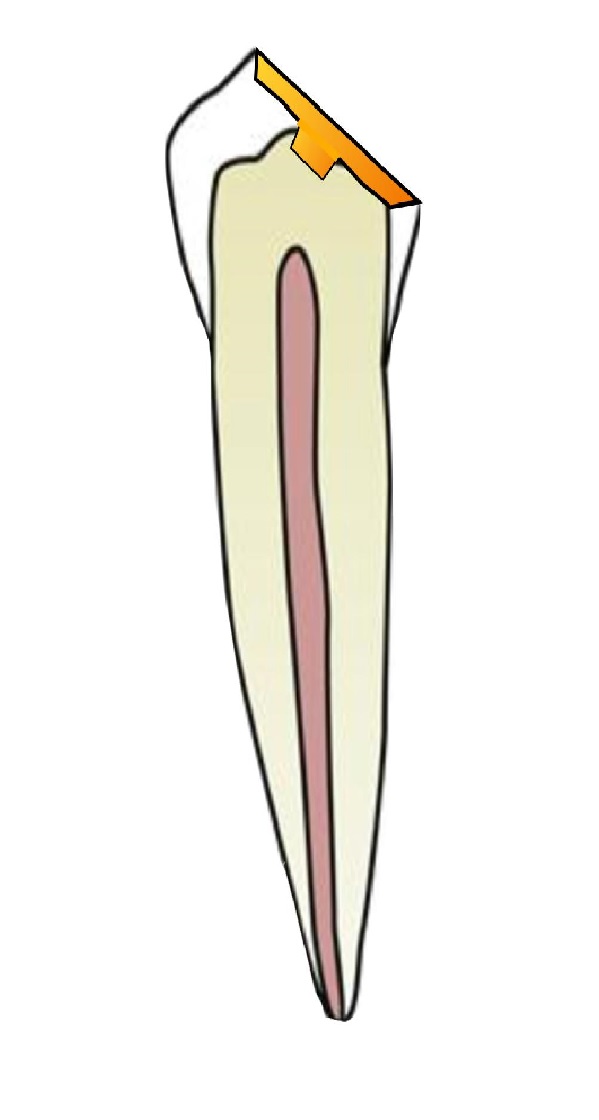
The first evidence of the use of beeswax as restorative material
The Lonche jaw - Slovenia. A severyly decayed tooth was restored with beeswax using a retention box.
Image recreated based on Bernardini et al. 2012. https://journals.plos.org/ plosone/article/file?id=10.1371/journal.pone.0044904&type=printable
1600 BCE
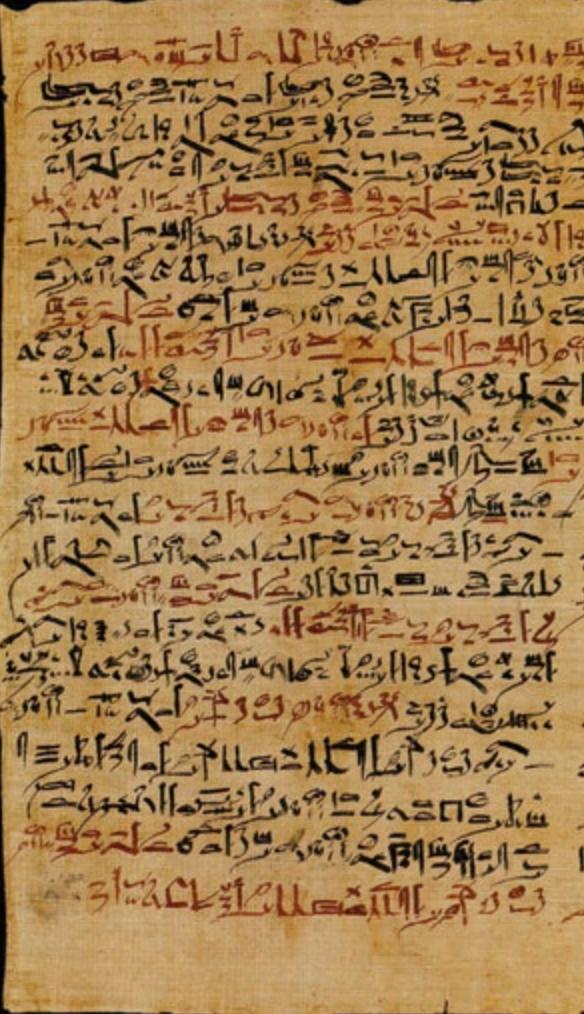
The Edwin Smith Papyrus
The Edwin Smith surgical papyrus was discovered in 1862. It contains 48 trauma cases, with 27 involving the head, including one on the correct mandibular manipulation for dislocation.
Image Courtesy of the New York Academy of Medicine Library.
630 BCE
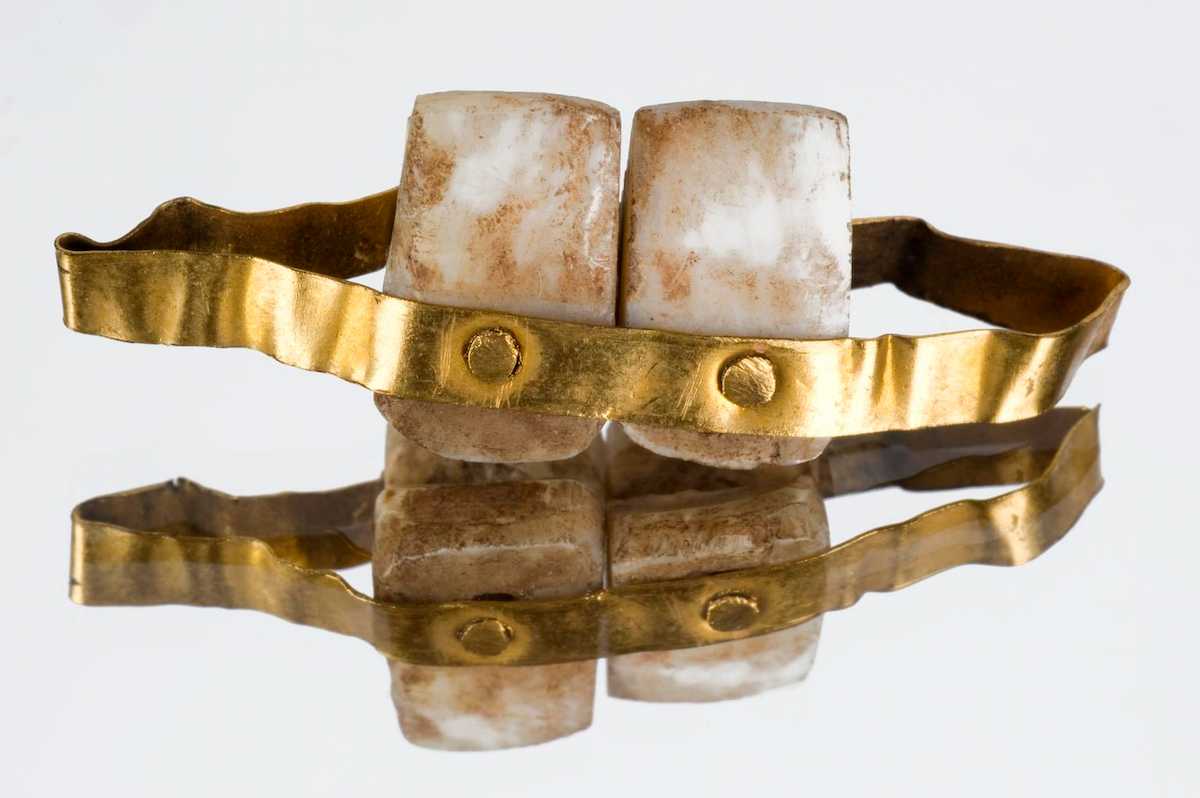
First prosthodontic devices
This is an Etruscan Ceremonial gold band to support missing upper incisors. It was found almost exclusively in young women of the upper class, most likely for ceremonial purposes. This Etruscan denture replaces two upper central incisors that were removed on purpose. It’s replacement symbolized status and was undertaken for ceremonial not prosthodontic purpose.
Image, from Science Museum, London, Creative Commons
3-4c. BCE
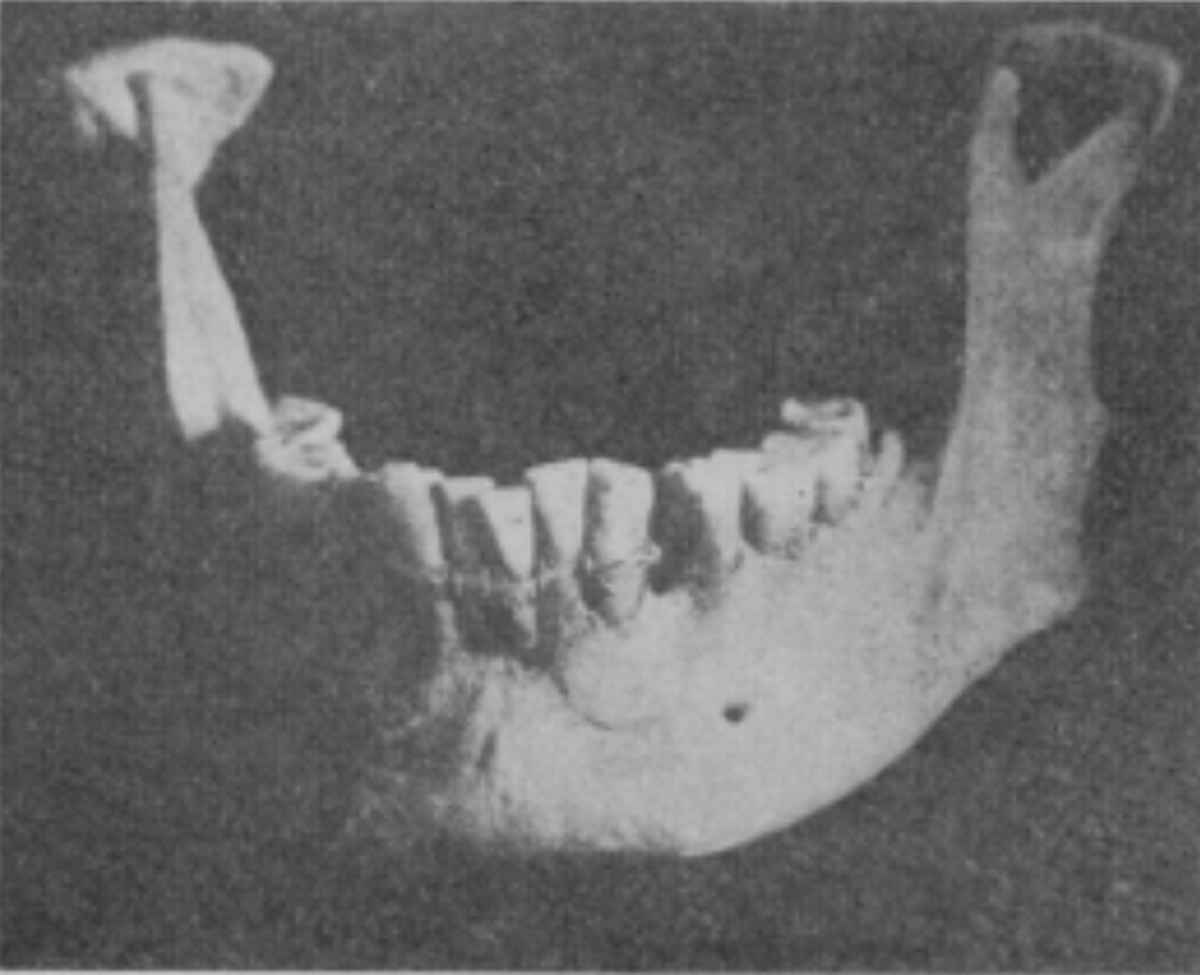
The first prosthodontic device to support loose teeth
Gold-wired supported loose teeth of both upper and lower incisors were found in graves in Egypt, Greece and Lebanon. The first device to stabilize loose teeth or replace missing ones. This Phoenician speciment was found in Sidon, current Lebanon, in 1860. At the time the speciment was at the Louvre Museum.
Torrey, 1919. https://doi.org/10.2307/3768461
80 C.E
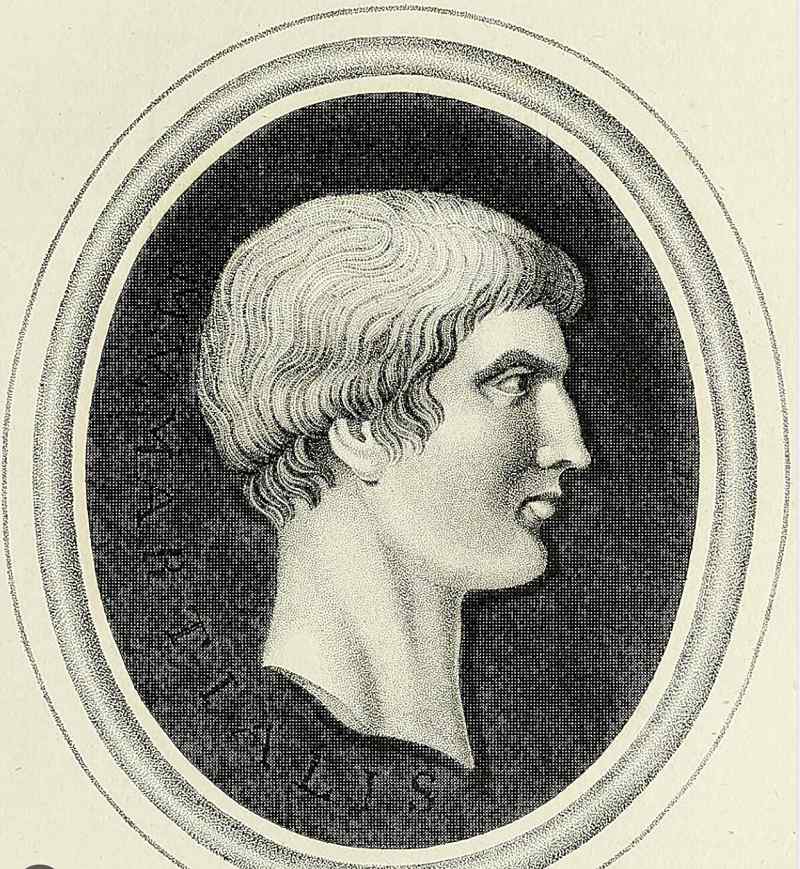
The first dentist whose name is preserved to us, Casellius
He was a dentists in the Roman Empireand was described by Martial, a Roman poet, who recorded the name of the first dentist in an Epigram: “Exemit aut reficit dentem Casellius aegrum” - “Cascellius extracts or repairs the aiching tooth.”
Martial, Epigrams, To Gallus, Book X, 56, https:// www.loebclassics.com/view/martial-epigrams/1993/ pb_LCL095.369.xml?mainRsKey=4FW7Jt. Image - Martial 38/41-103 C.E.
600 C.E

First impant
Tooth-shaped implants of three lower incisor teeth made of seashell (alloplasts) as a replacement used by the Mayan Civilization.
From the Peabody Museum of Archaeology and Ethnology at Harvard University.
983 C.E
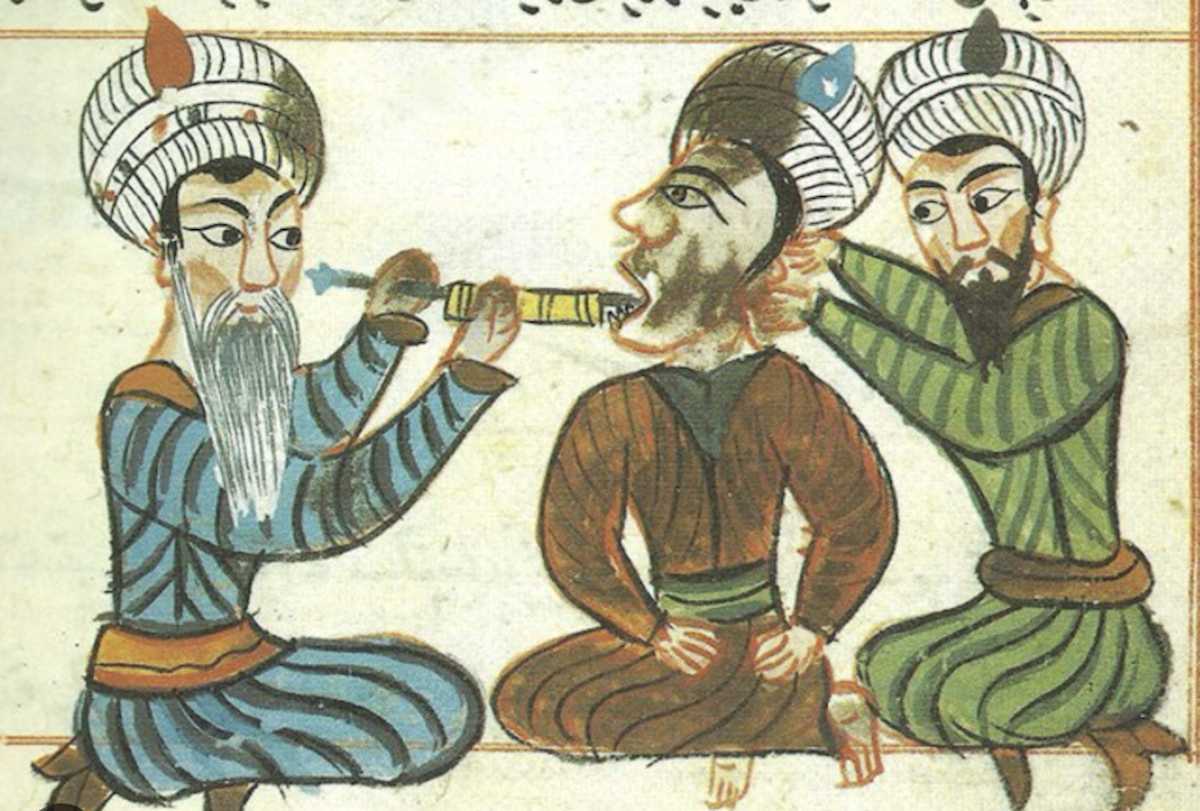
Hot-iron cauterization as a treatment for tooth decay
Abubakr al-Akhawayni al-Bokhari. Persian physician, in Hidayat al Mutallimin fi-al-Tibb (Learner’s Guide to Medicine). recommends, cauterization of the tooth with a hot iron and extraction only as a last resort for toothache. The round cylinder is a protective tube to avoid burning the cheecks.
1092
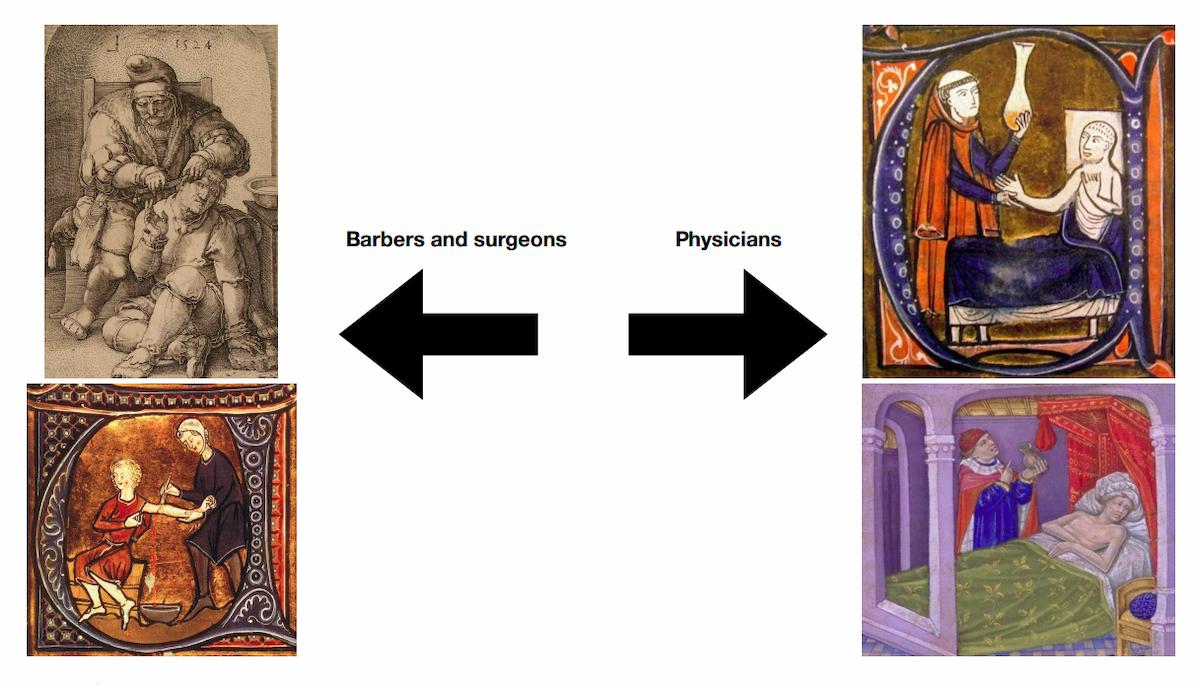
1092
Separation of barbers and surgeons from physicians
The Pope Cyril II of Alexandria introduces new grooming style for monks and invites barbers to perform haircuts and any procedure involving blood, thus opening the door for barbers to perform surgical procedures. It marks the formal separation of medicine (practiced by priests) and surgery (barber-surgeons).
1301
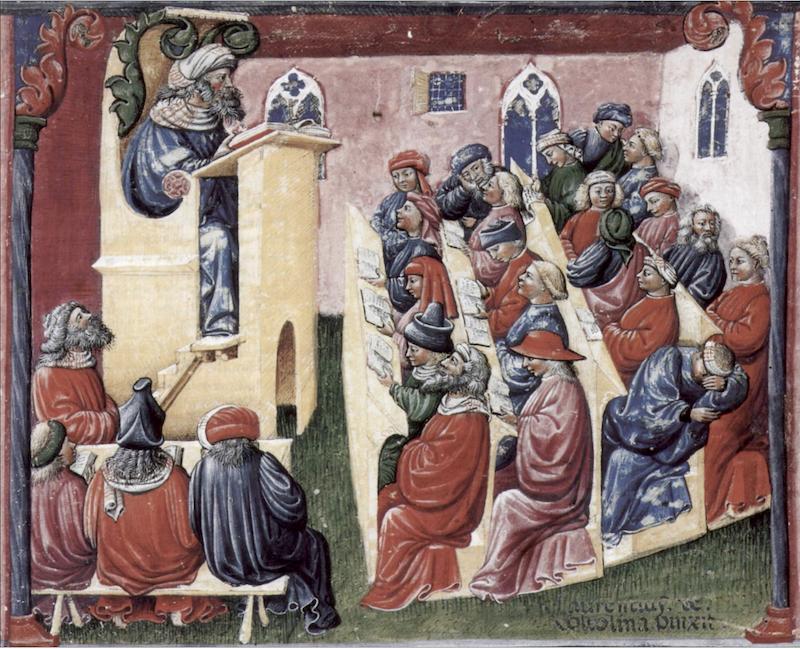
First regulation for the practice of barber-surgeons
Regulation is instituted in France for Barbers to take an examination in front of Maitres de Metier (an expert) to call themselves barber-surgeons.
1320

The first tooth drawer (touzdrawere), Peter de London
He is mentioned by name in the Worshipful Company of Barber’s documents. The Company was first recognized in 1308.
1483
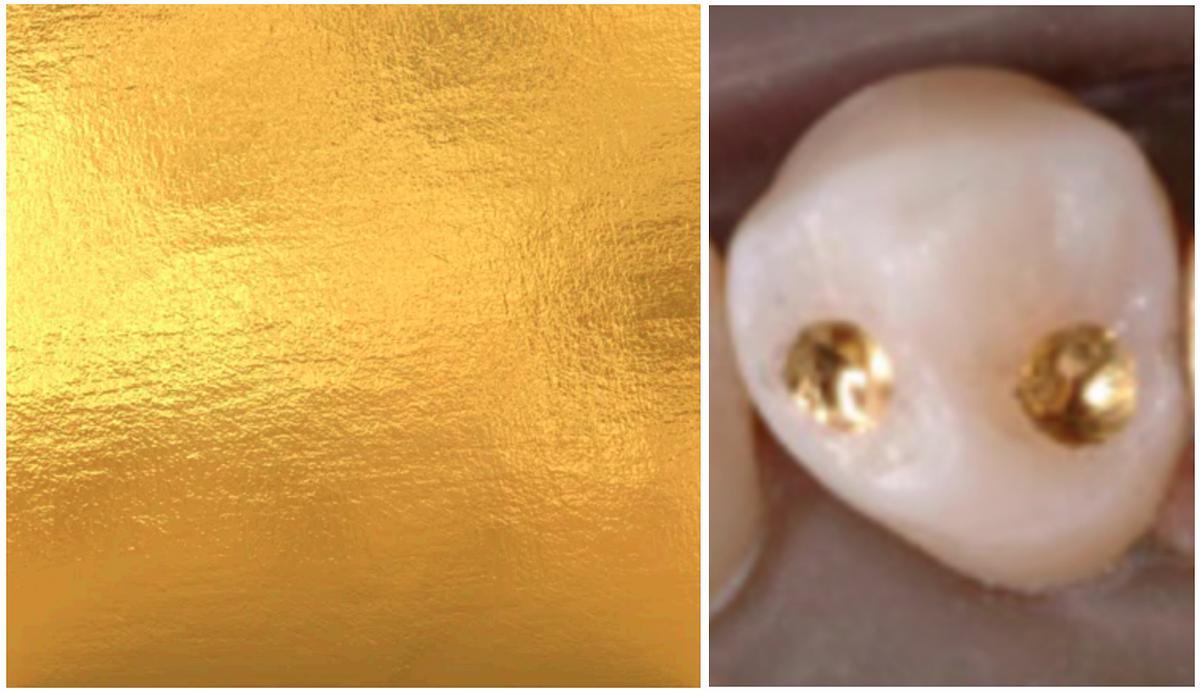
First lasting dental filling material - gold
Giovanni d’Arcoli, professor at the University of Bologna and Padua, describes gold foil to fill teeth.
1514
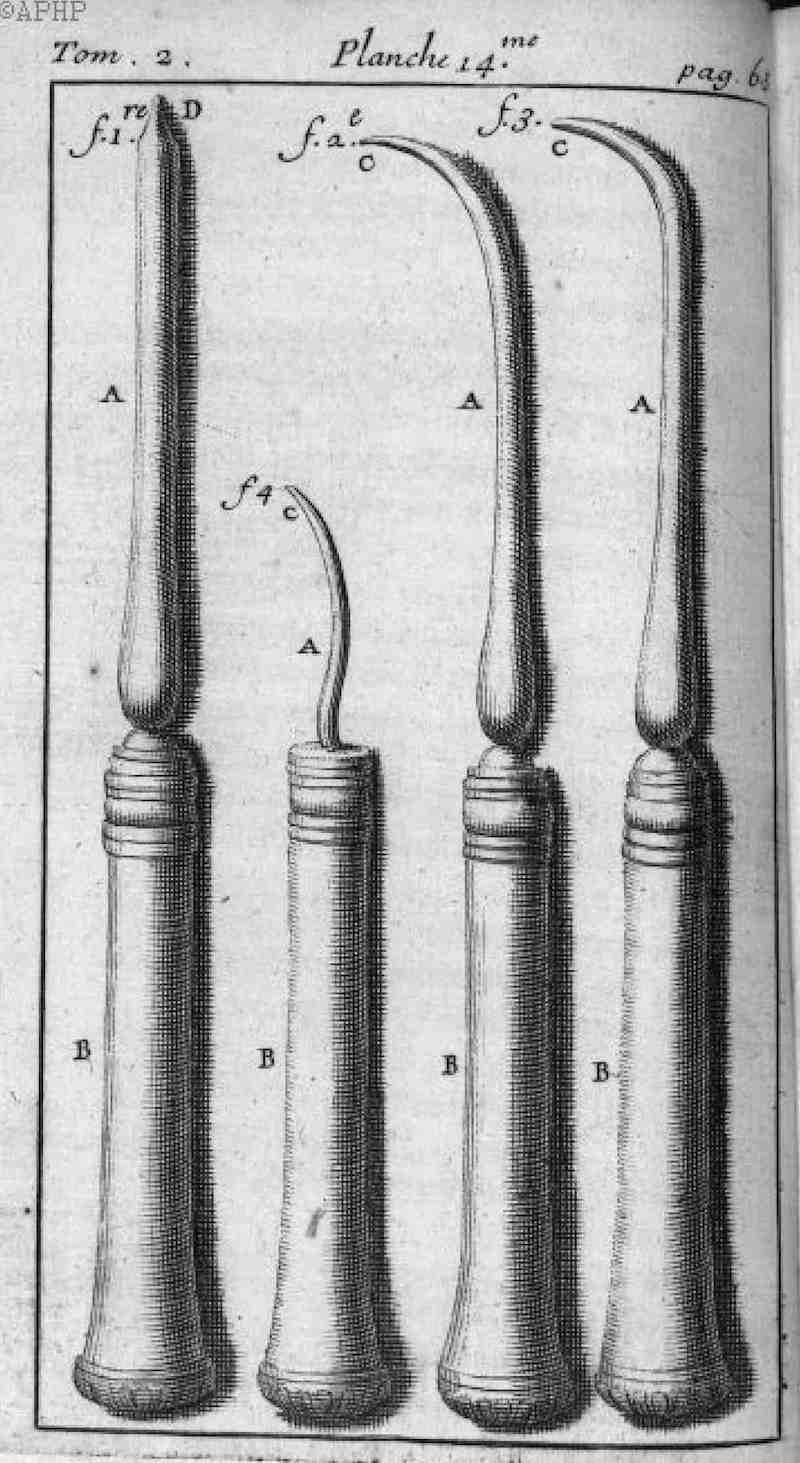
Description of cleaning a decayed tooth before filling it
Giovanni da Vigo (1460-1520) of Rapallo, Italy, publishes Practica Copiosa in Arte Chirurgica, advocating cleaning of carious teeth before filling with gold foil.
1528
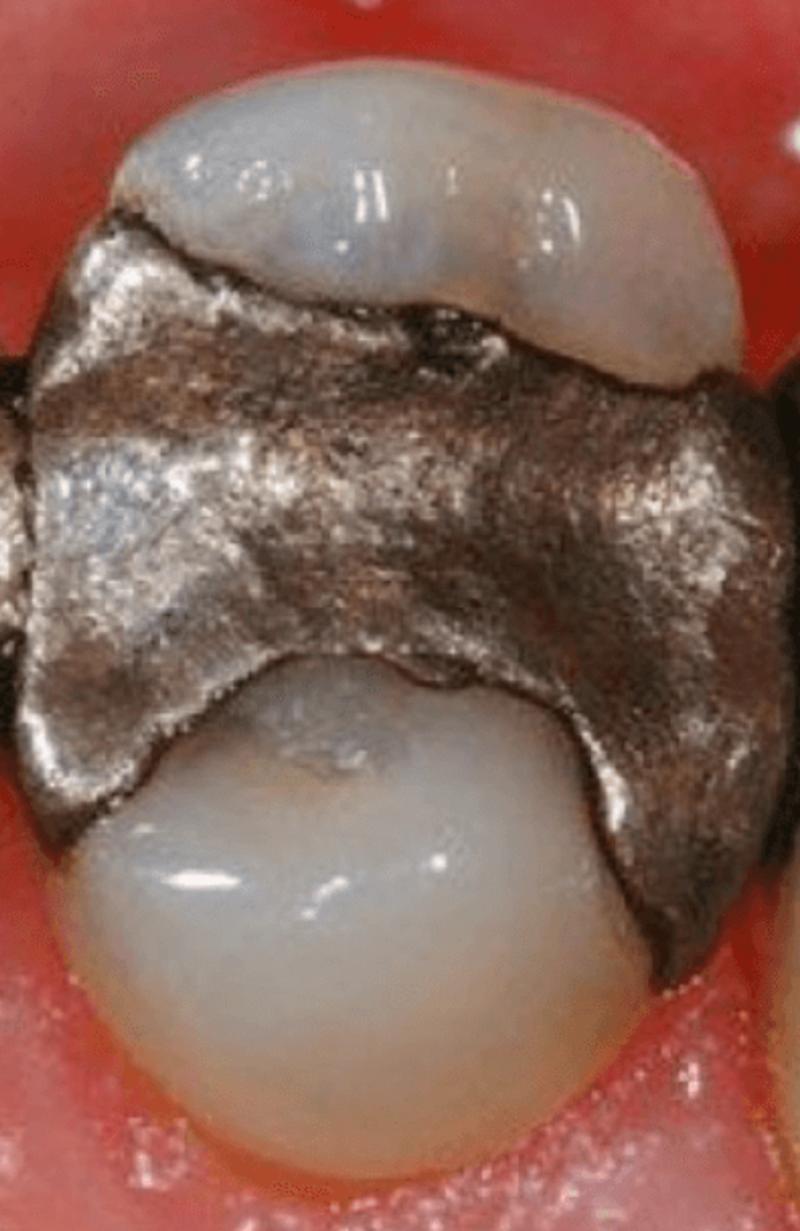
First description of amalgam to restore teeth
The description appears in Praxis by Johannes Stockerius.
1530
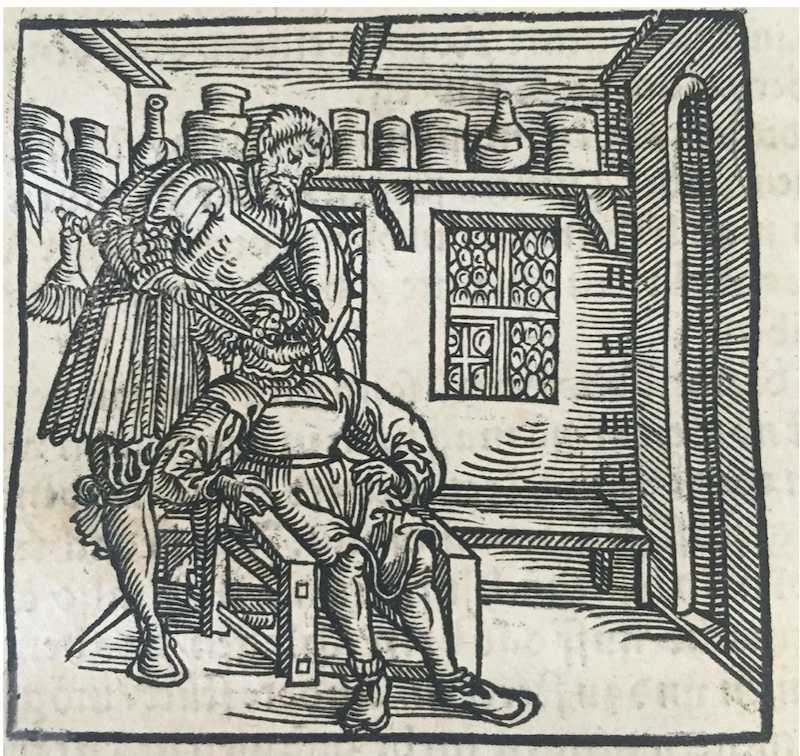
The first dental book
The German language book, Zene Artzney, was written for the itinerant dentist and layperson. It was published in Leipzig and had seen 13 editions.
Image in Wikimedia Commons.
1548
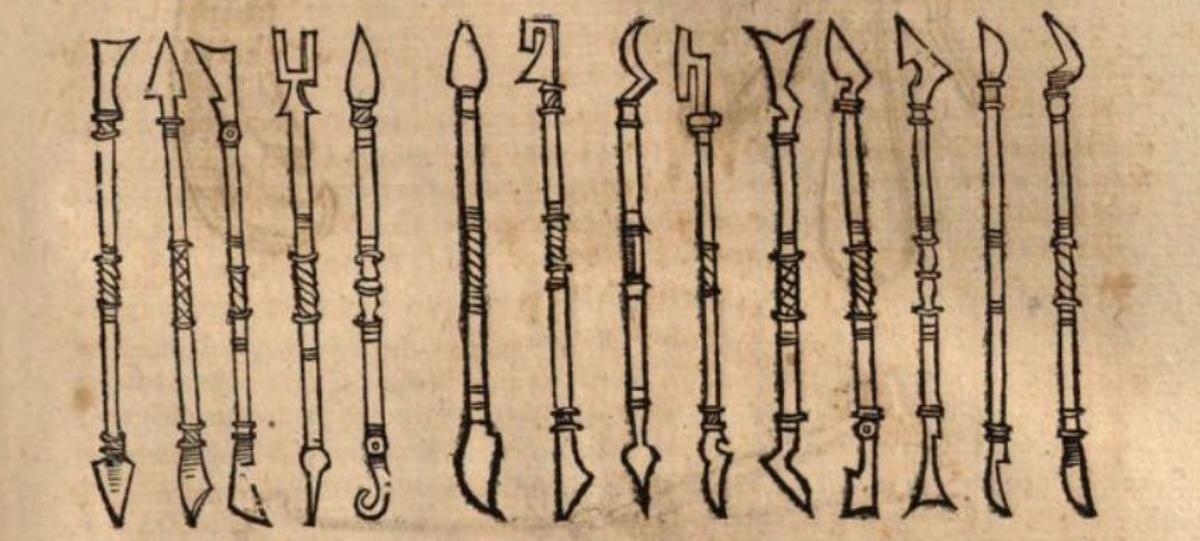
The first book on oral hygiene
Walther Hermann Ryff (1500-1548), a German surgeon from Strasbourg, publishes Die grosse Chirurgie, which includes dental instruments for extraction. Ryff was the first to publish a book on oral hygiene. On the right, are instruments to be used to clean teeth of deposits, precursors of modern-day scaling instruments used by oral hygienists.
Image in Wikimedia Commons.
1563
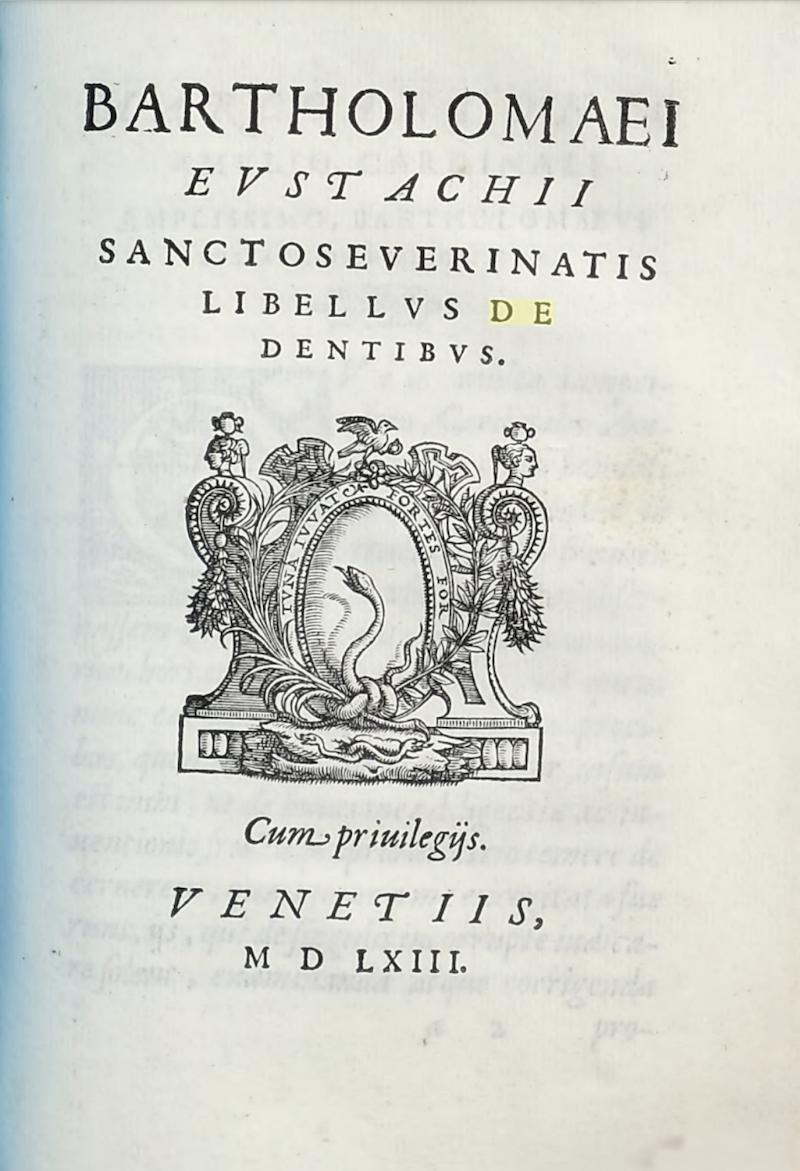
First study dedicated solely to the anatomy of the teeth
Bartolomeo Eustachio (1520-1574), Italian anatomist, surgeon, professor of anatomy in Rome was the author of the first study dedicated solely to the anatomy of the teeth: Libellus de Dentibus.
Image in Wikimedia Commons.
1593
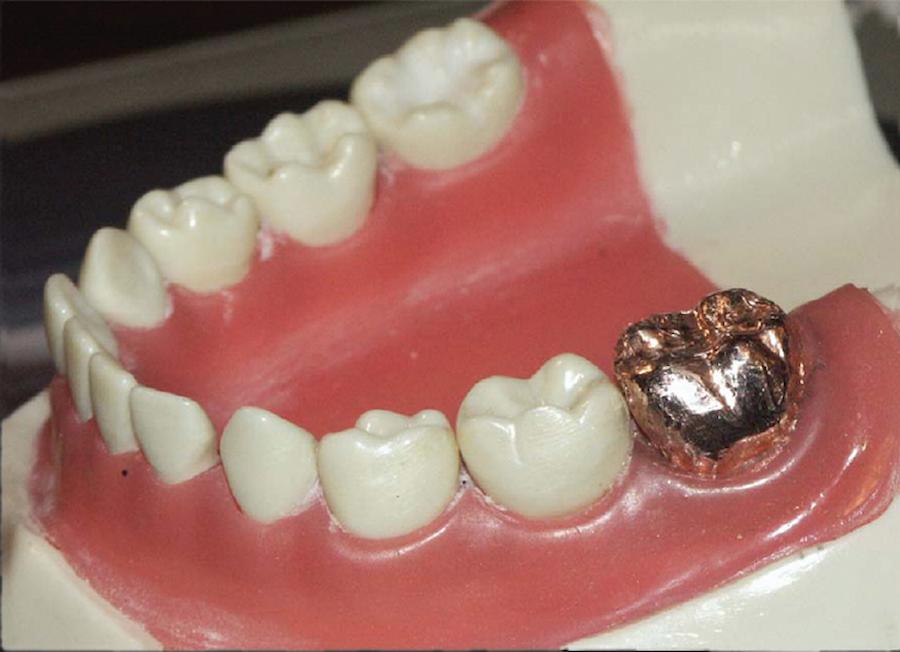
The first gold crown
Jacob Horst, German physician publishes his book, De Aureo Dente Maxillari Pueri Silesii - on the Silesian Boy with the Golden Tooth. It was an account of the first gold (swaged) crown made to deceive a superstitious audience rather than a replacement.
Image from Spielman, 2009. DOI: 10.1177/0022034508328196
1601
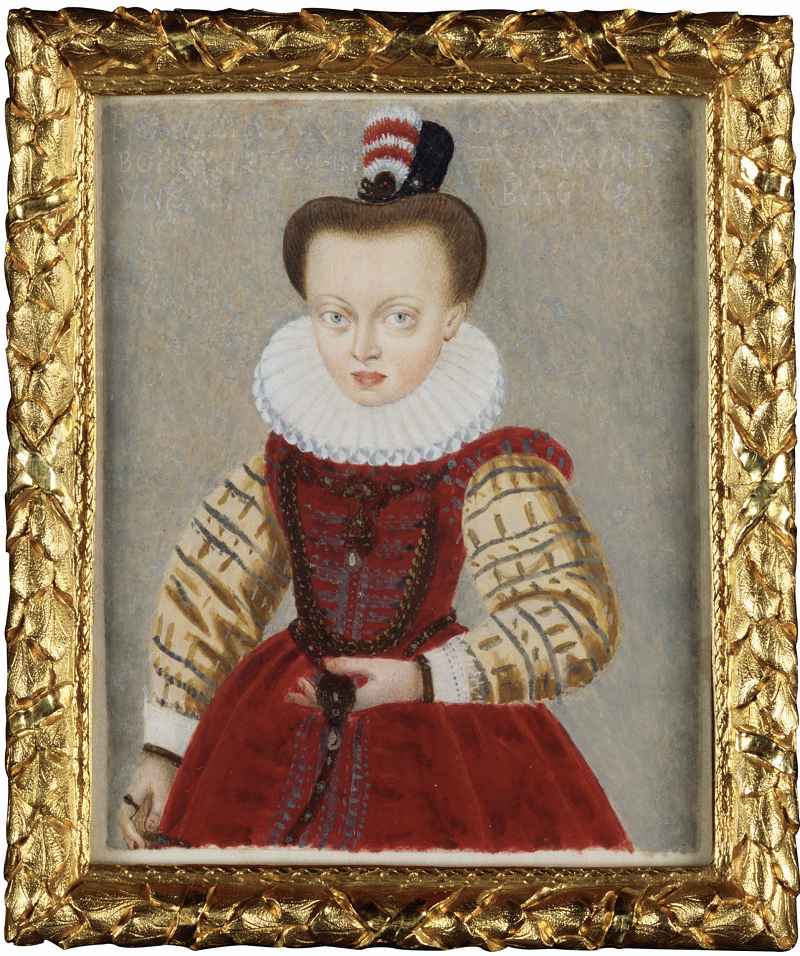
The oldest amalgam restoration
The restoration was found in the molar tooth of the 29-year-old Princess Anna Ursula of Brunswick and Luneburg after exhumation. She died unmarried. Her grave site is in Carlsheim, north of Munich. The painting depicts her at age 23.
1612
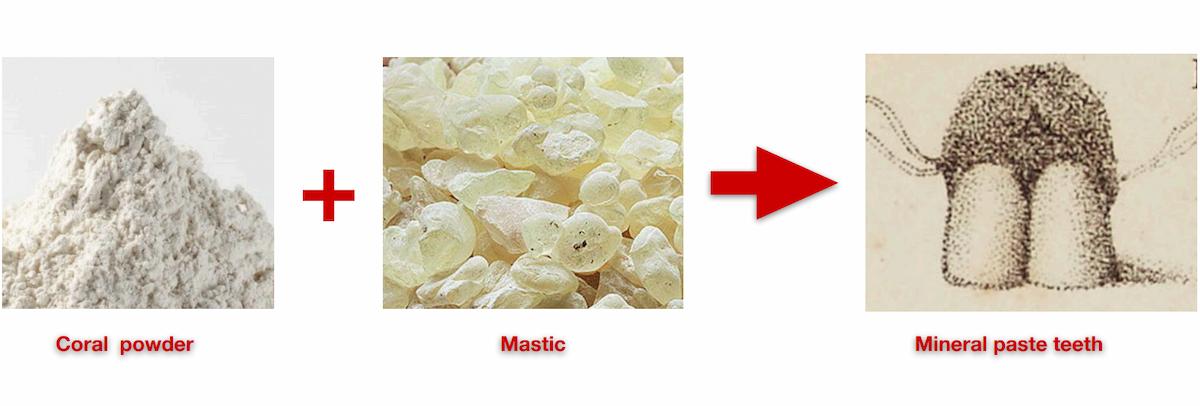
1612
The first mineral paste for artificial teeth to replace ivory-carved or extracted teeth
Jacques Guillemeau, French dentist suggests using a primitive form of mineral paste for artificial teeth. His suggestion is to include mastic and powdered white coral.
1606

Description of six dentifrices for tooth-whitening
Peter van Foreest (1521-1597) describes six dentifrices for tooth-whitening, maintenance of dental health, and against halitosis that contains cinnamon, menthe water, Arabic gum, and abrasive agents like pulverized bone, pumice, or salt, dissolved in rose water or white wine.
1683

First description of microbes in saliva
Anthony van Leeuwenhoek (1632-1723), Dutch amateur scientist, observes microscopic “animalcules”, for the first time in saliva and the oral cavity
Image in Wikimedia Commons.
1728
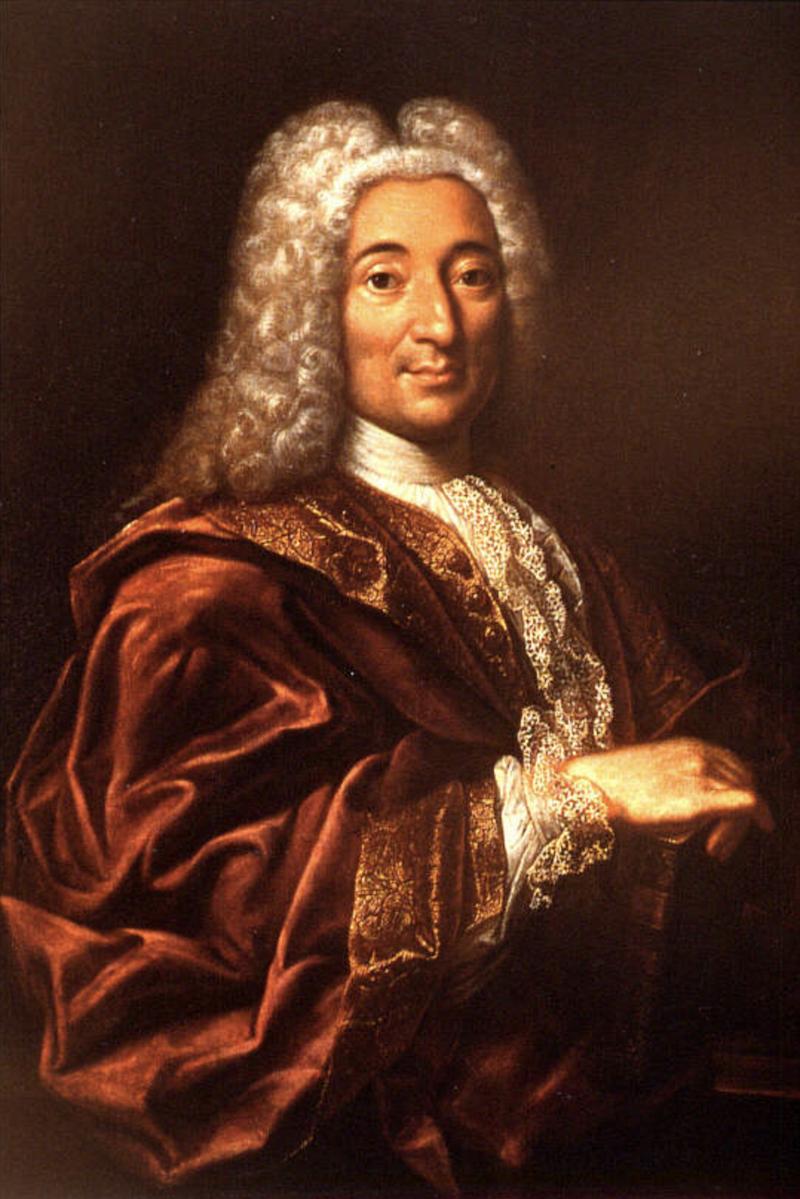
The first comprehensive work on dentistry is published
Pierre Fauchard (1686-1761), French surgeon-dentist and the Father of Dentistry, publishes the first comprehensive work on dentistry, Le Chirurgiene Dentiste.
Image in Wikimedia Commons.
1746
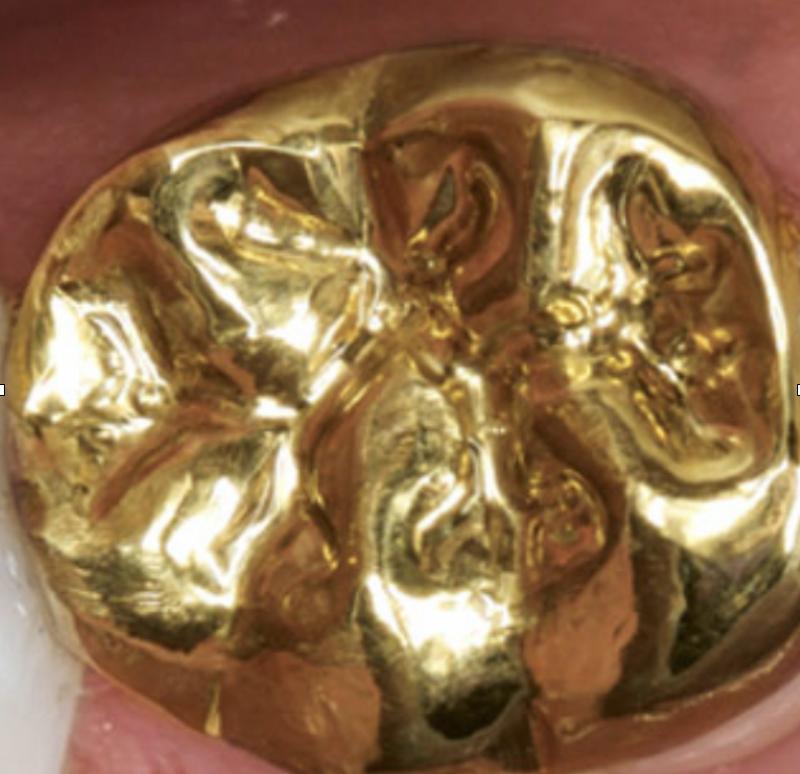
The first cast gold crown
Claude Mouton (?-1786), French, dentist to Louis XV, publishes Odontotechnique in which he describes the the gold crown for the first time as a prosthodontic device (calottes d’or).
1756

1756
First dental impressions with beeswax and plaster - cast models
Philipp Pfaff (1713-1766), Royal Prussian court dentist to Frederick the Great, is the first to take dental and arch impressions with beeswax and obtain cast models with plaster of Paris. The cast models were placed in centric relations using wax.
Image courtesy of the British Dental Museum
1761
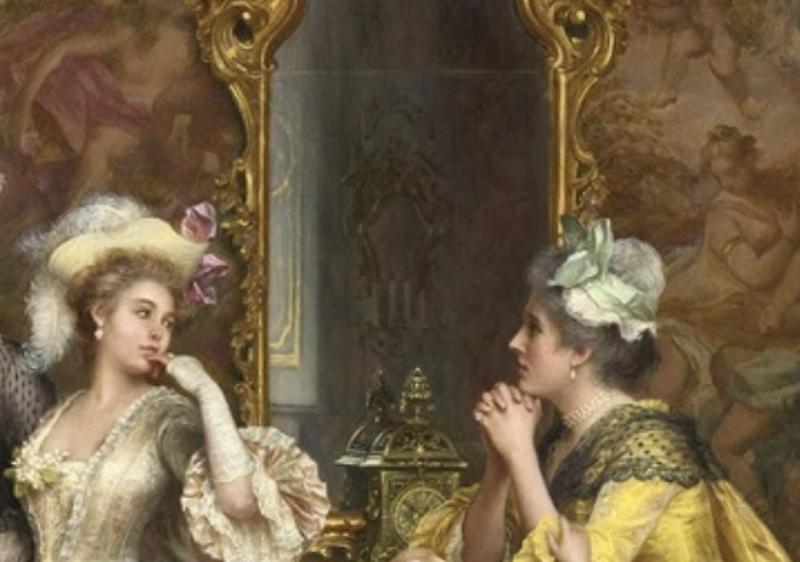
The first practicing female dentist - in Paris, Marie Madeleine Calais
The first recorded female dentist was an apprentice for eight years to Claude Jacquier Geraudly, a Parisian dentist. A second female dentist, Mademoiselle Hervieux, also practiced near the City Hall in Paris. In 1759 both are listed in Jèze-Tableau de la ville de Paris, along with 33 other dentists practicing in the city.
1780
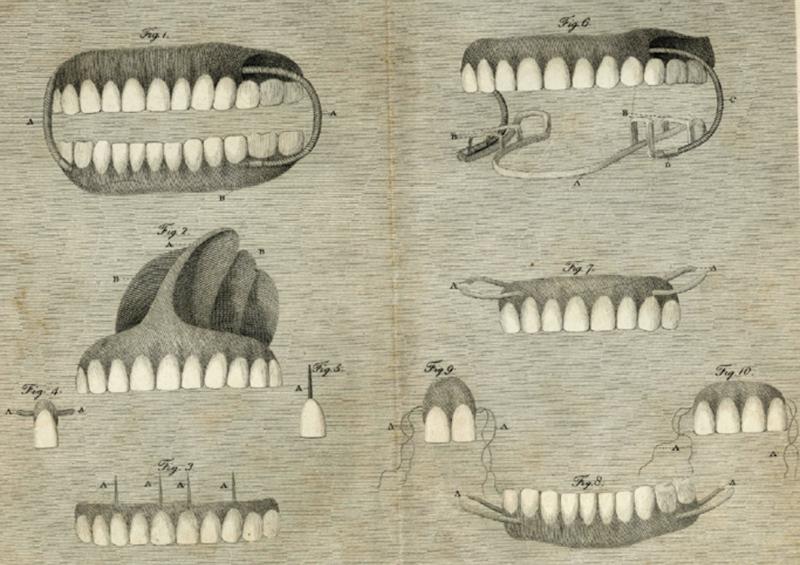
Invention of the mineral paste, a precursor of modern porcelain used for esthetic crowns
Nicolas Dubois de Chemant (1753-1824), a Parisian dentist publishes his work on mineral paste, a precursor of modern porcelain used in prosthodontics.
Image in Wikimedia Commons
1790
..jpg)
The first foot operated dental drill
John Greenwood (1760-1810), favorite dentist of George Washington, created the first foot operated dental drill. He converted it from his mother's spinning wheel. The drill is housed at the New York Academy of Medicine Rare Book Library.
Courtesy of the New York Academy of Medicine Library
1799
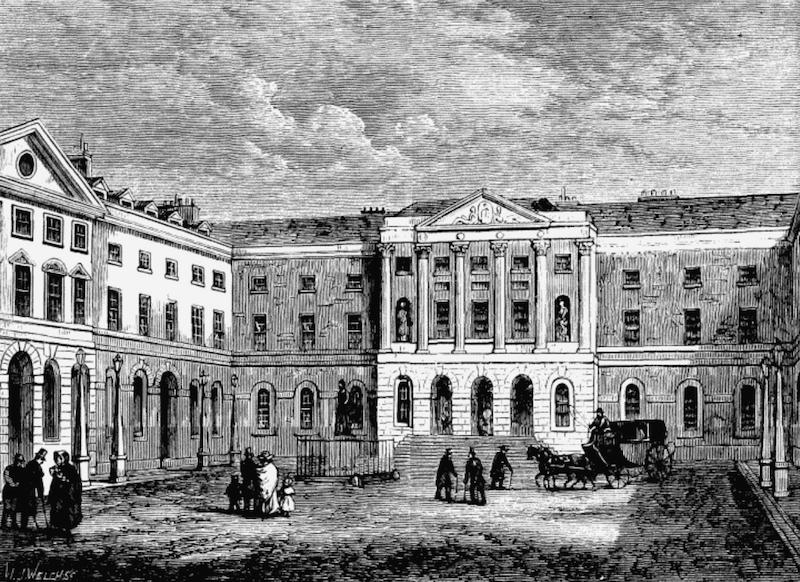
The first formal series of lectures on dentistry
The first lectures were delivered to medical students at Guy’s Hospital in London. Their teacher was a dentist named Joseph Fox.
Image in Wikimedia Commons
1808
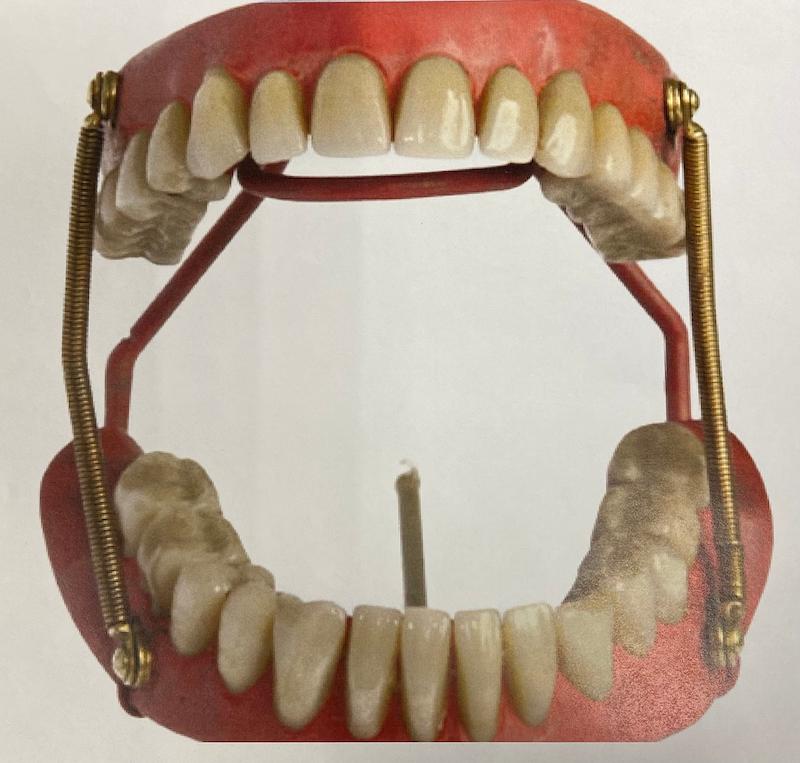
First semi-transparent porcelain teeth
Giuseppangelo Fonzi improved on the porcelain teeth of Dubois de Chemant. In contrast to the latter, Fonzi had created individual semitransparent porcelain teeth, not a single block of denture base, and teeth all made of porcelain, thus gaining more esthetic results.
Image, courtesy of the British Dental Museum
1832
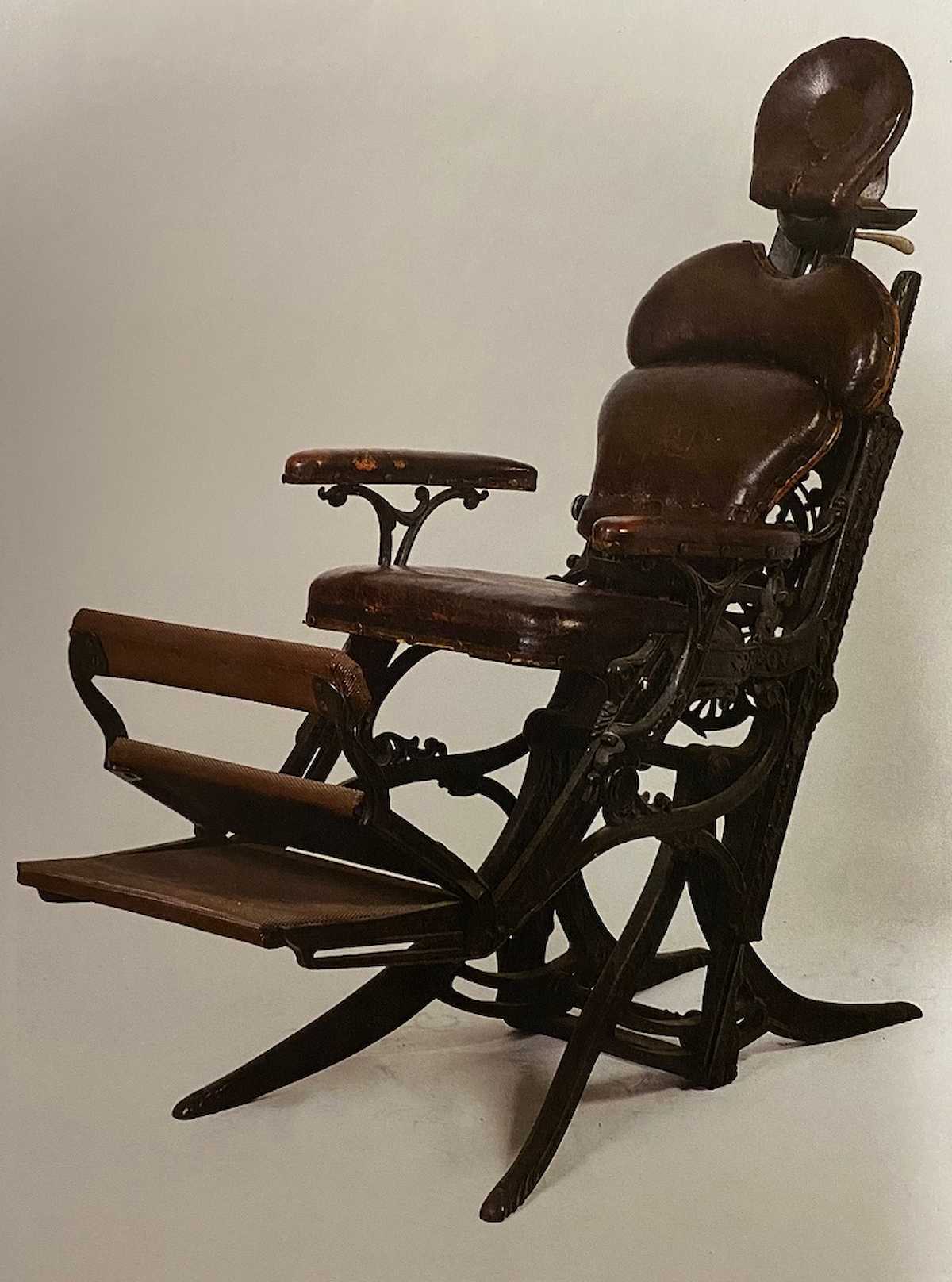
James Snell designs the reclining dental chair
The dental chair was first a comfortable feuteuil. James Snell was the first to add adjustable parts to it.
Image courtesy of the British Dental Museum
1835 - 1850
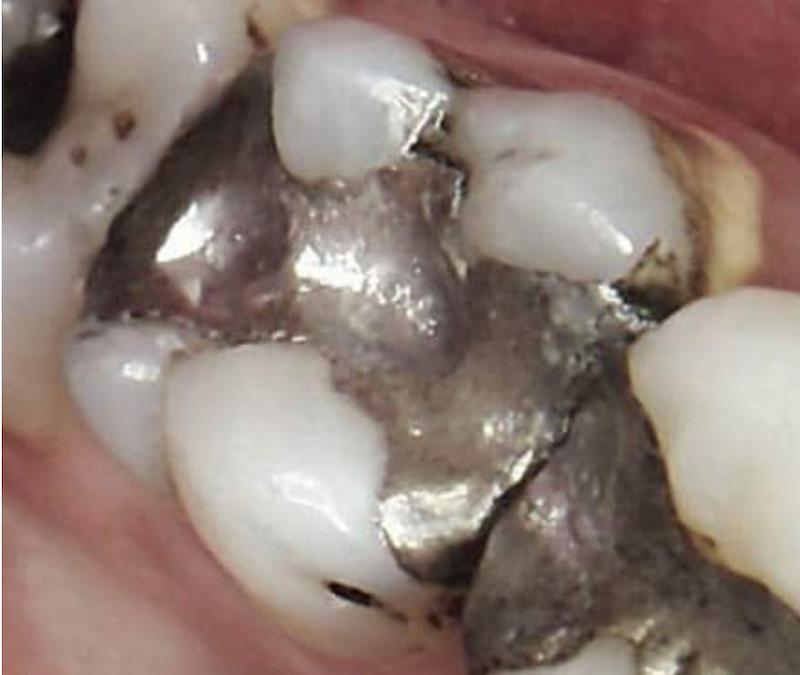
The Amalgam Wars
Edward Crawcour and his nephew, Moses, two dentists from London introduce in America the Royal Mineral Succedaneum (silver coin shavings and mercury, an early form of amalgam). Their success starts the The Amalgam Wars (1835-1850) with the ban of amalgam.
1839
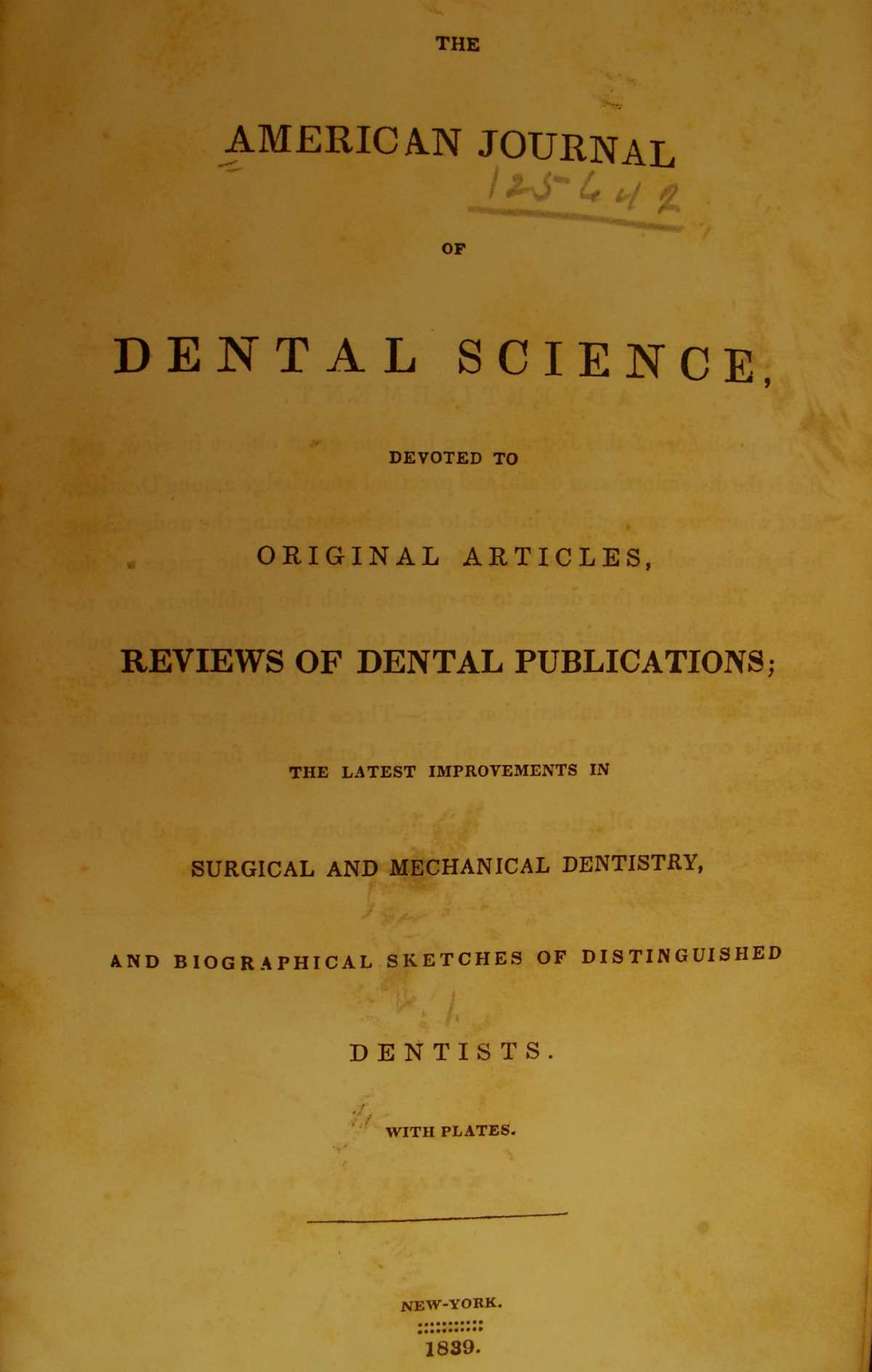
The first dental journal, American Journal of Dental Science is launched.
Image in Wikimedia Commons
1840

1840
First dental school in the world opens
The Baltimore Dental College in Baltimore MD is opened on November 3, by two visionary physicians, Horace H. Hayden and Chapin Harris.
Image in Wikimedia Commons
1844
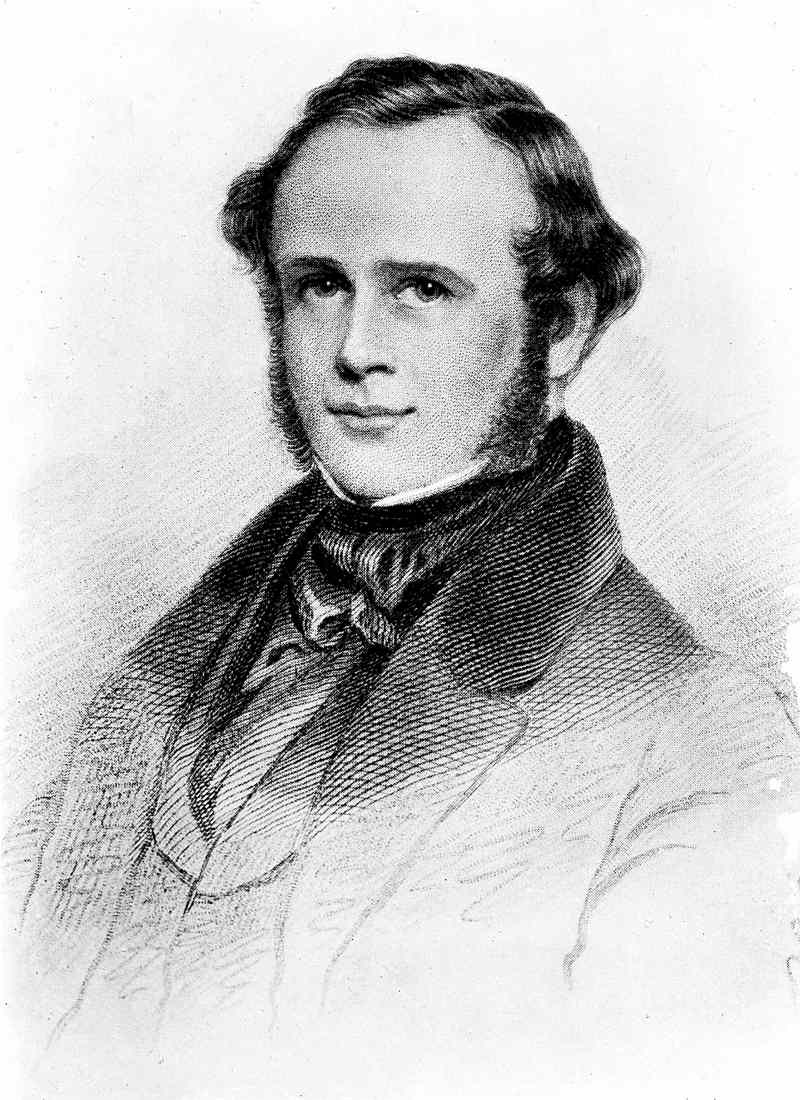
Nitrous oxide anesthesia is demonstrated in dentistry by Horace Wells
On December 11, 1844, Horace Wells (1815-1848), a Hartford, Connecticut dentist successfully demonstrated the use of nitrous oxide anesthesia in extracting a tooth painlessly.
Image in Wikimedia Commons
1859
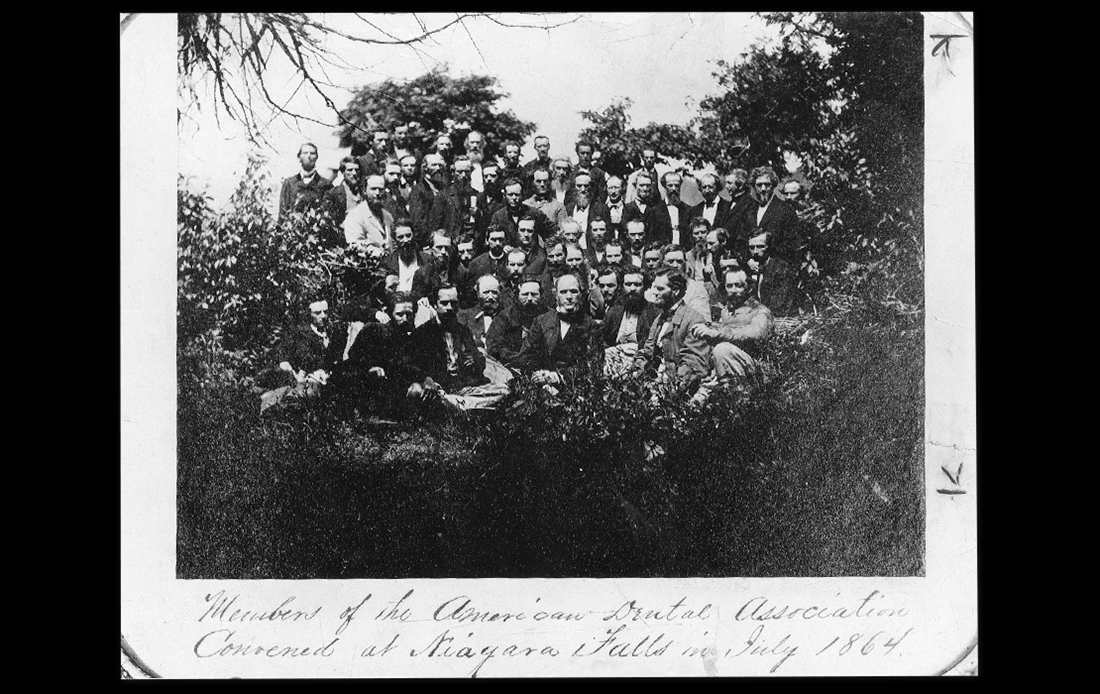
American Dental Association is established
The ADA is launched with William Henry Atkinson (1815-1891) as its first president.
Courtesy of the ADA Library & Archives, Chicago, IL
1866
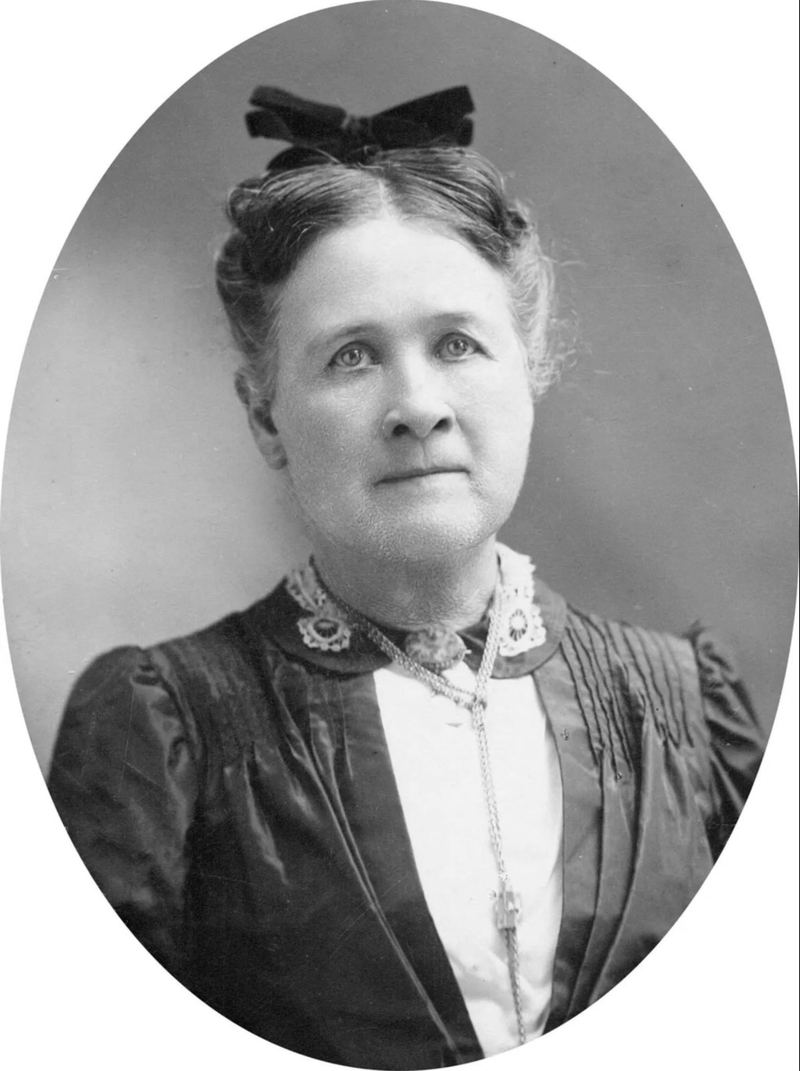
The first woman dentist in America
Lucy Hobbs Taylor of Ellenburg NY, graduates from the Ohio College of Dental Surgery in Cincinnati, OH.
Image in Wikimedia Commons
1869
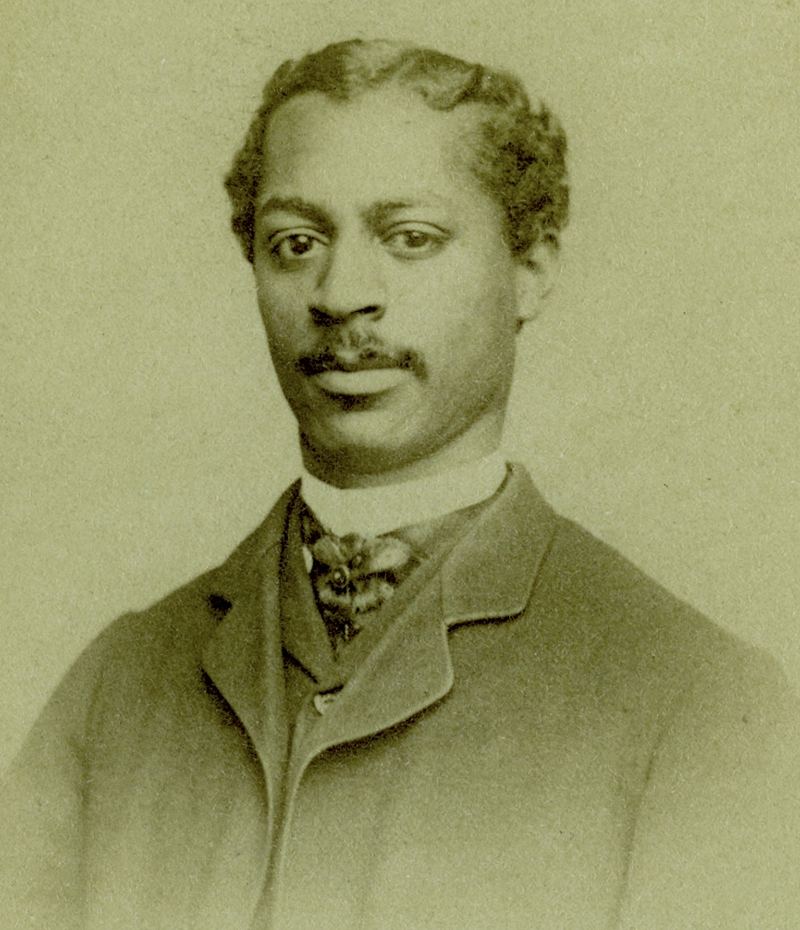
First black dentists, Robert Tanner Freeman, George Franklin Grant
Freeman (image) and his classmate, George Franklin Grant, graduated in 1869 in one of the first dental classes at Harvard University School of Dentistry.
Image in Wikimedia Commons
1871

Foot pedal-operated dental drill is introduced
James Beall Morrison, an Ohio dentist, patented the foot-pedal operated dental drill.
Image in Wikimedia Commons
1877
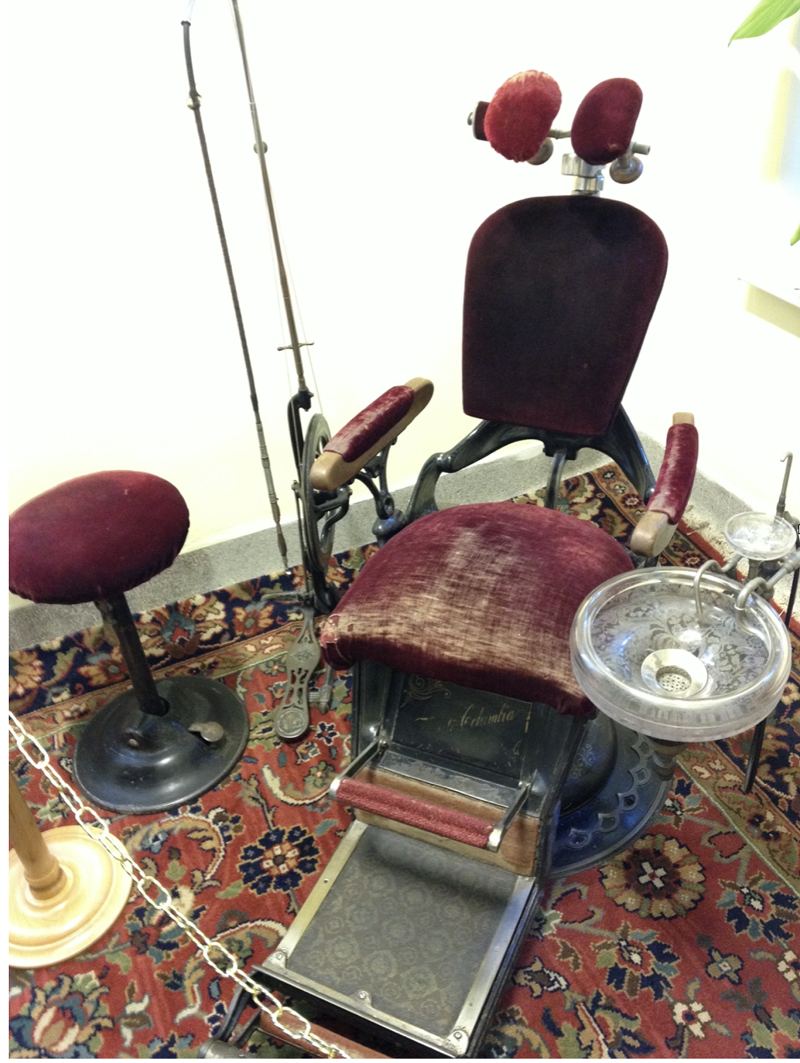
The adjustable Wilkerson dental chair
The chair was operated by a hydraulic pump to elevate and lower the patient.
Image courtesy Vienna University Museum of the History of Dentistry.
1880s
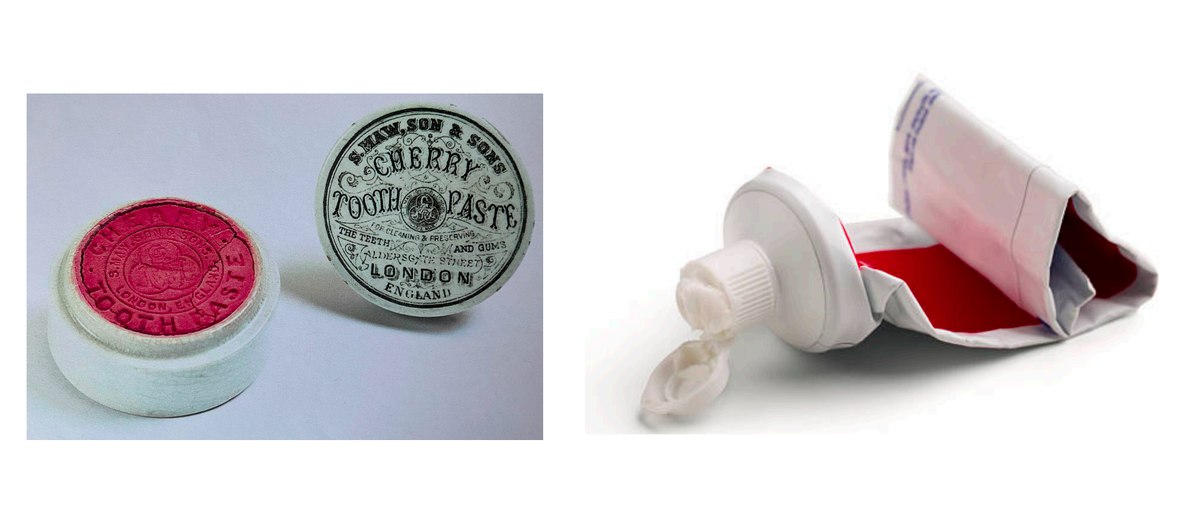
1880s
The collapsible toothpaste tube
The tube instead of a jar, is used to dispense toothpaste, based on Lucius Sheffield, a Connecticut dentist’s invention.
Jar - Courtesy of the British Dental Museum
1884
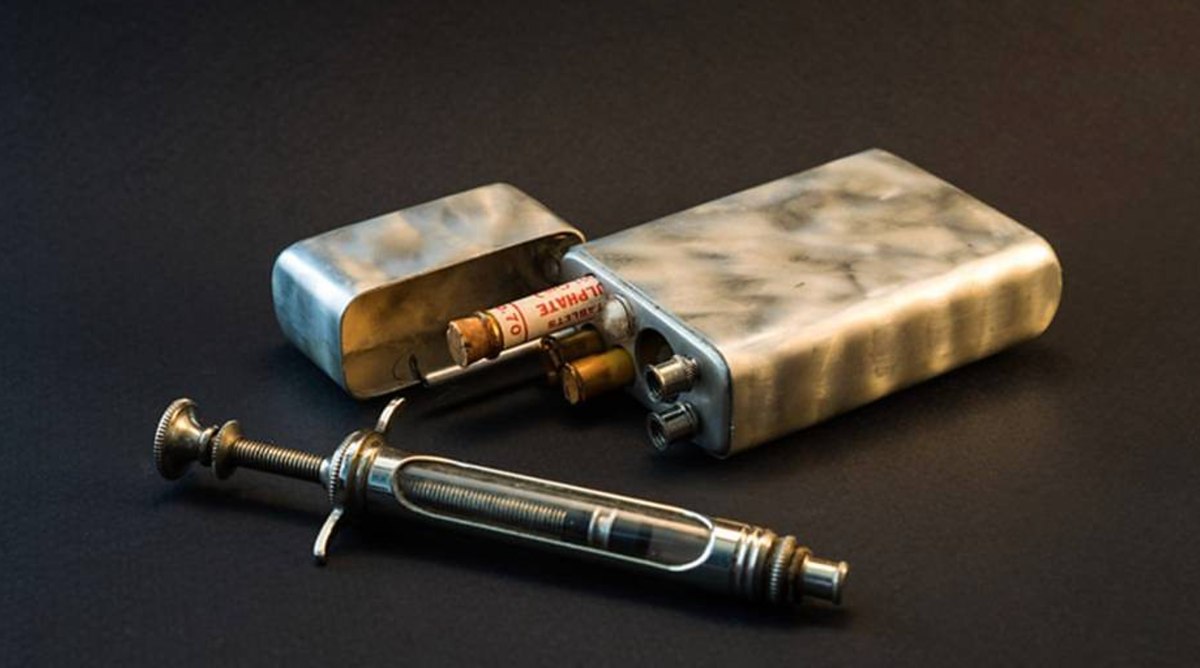
1884
Cocaine as a local anesthetic
Cocaine is used as a local anesthetic in dentistry on November 26, 1884. Charles Nash, a dentist successfully injects cocaine to the infraorbital nerve for anesthesia of upper incisors and performs a painless dental procedure on Richard J. Hall.
Courtesy Philippe Bonnet Collection.
1885

First Dental Assistant
Dental Assisting gets its start. Dr. C. Edmund Kells of New Orleans hires the first female dental assistant for chair-side duties in assisting him during treatment.
Image in Wikimedia Commons
1890
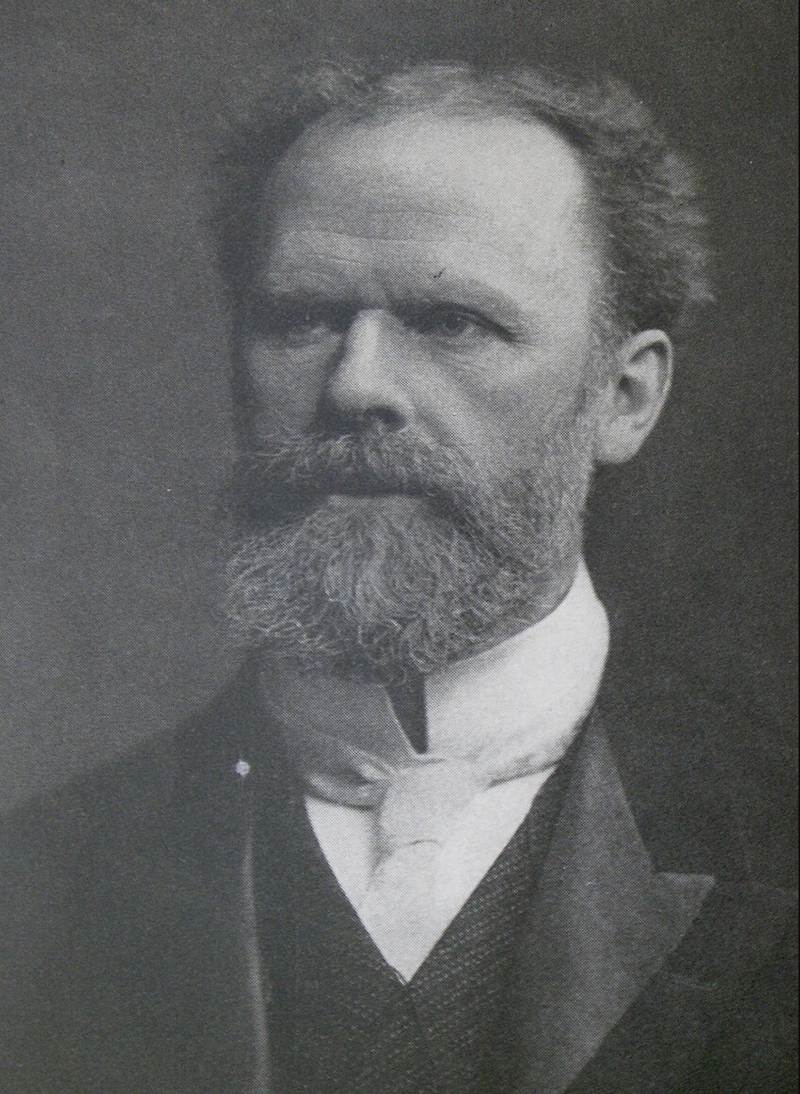
Willoughby Miller and the chemo-parasitic theory of caries
Miller, a Ph.D. student of Robert Koch at University of Berlin publishes his dissertation thesis on the chemo-parasitic theory of caries.
Image in Wikimedia Commons
1896
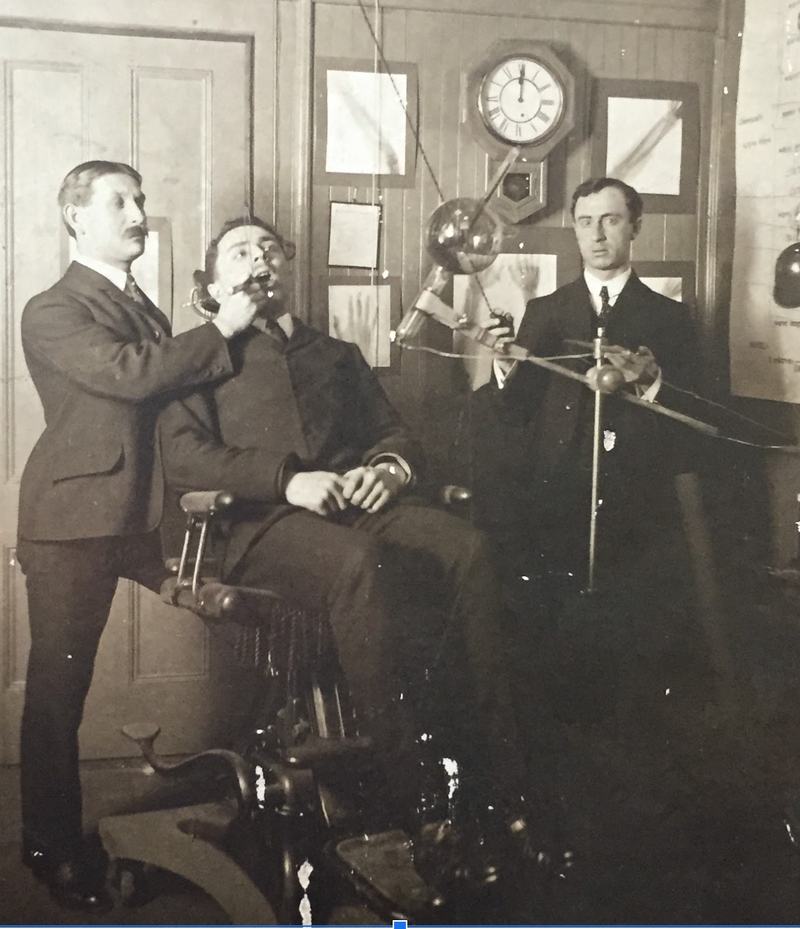
X-ray in dentistry
X-ray is used in clinical diagnosis in dentistry in Frankfurt. Image of radiograph taken in 1903 at New York College of Dentistry.
Courtesy NYU College of Dentistry Historical Archives.
1896
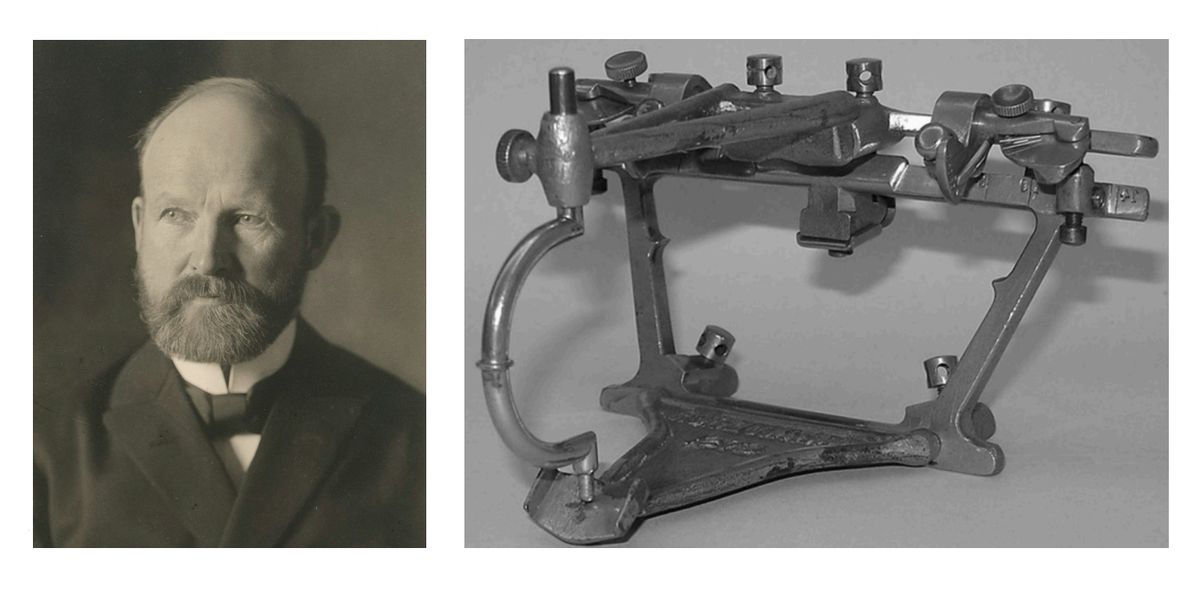
1896
The articulator is perfected
Alfred Gysi (1865-1957), Swiss Dentist, perfects the articulator by imitating the glenoid fossa and the condyle.
1900
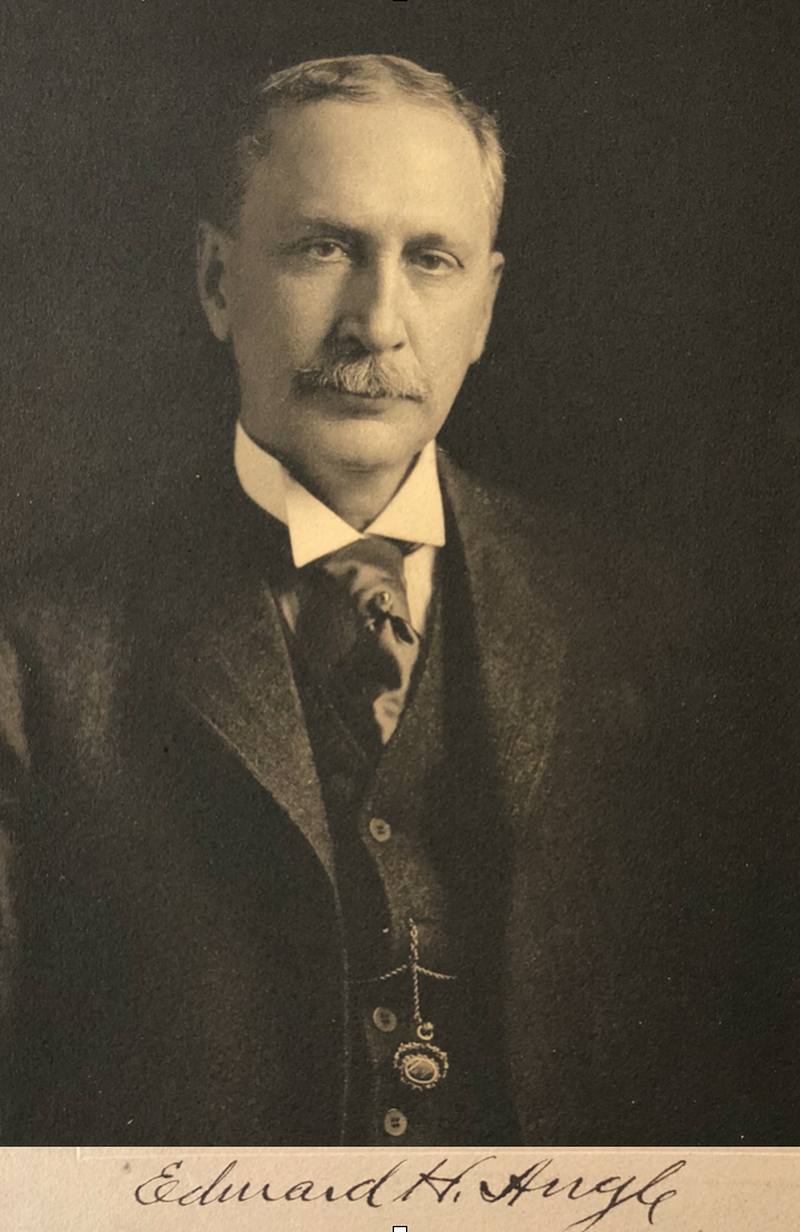
Edward Angle, and the first school of orthodontics
Edward Angle established The Angle School of Orthodontics in St. Louis.
Courtesy NYU College of Dentistry Historical Archives.
1906

1906
Local anesthetic with epinephrin is introduced
Epinephrine (Suprarenin), the vasoconstrictor isolated in 1901 by the Japanese scientist Jokichi Takamine, is marketed as a vasoconstrictor by the German pharmaceutical company Hoechst. Tablets were dissolved in sterile saline in the container (right) and aspirated into a syringe.
1908
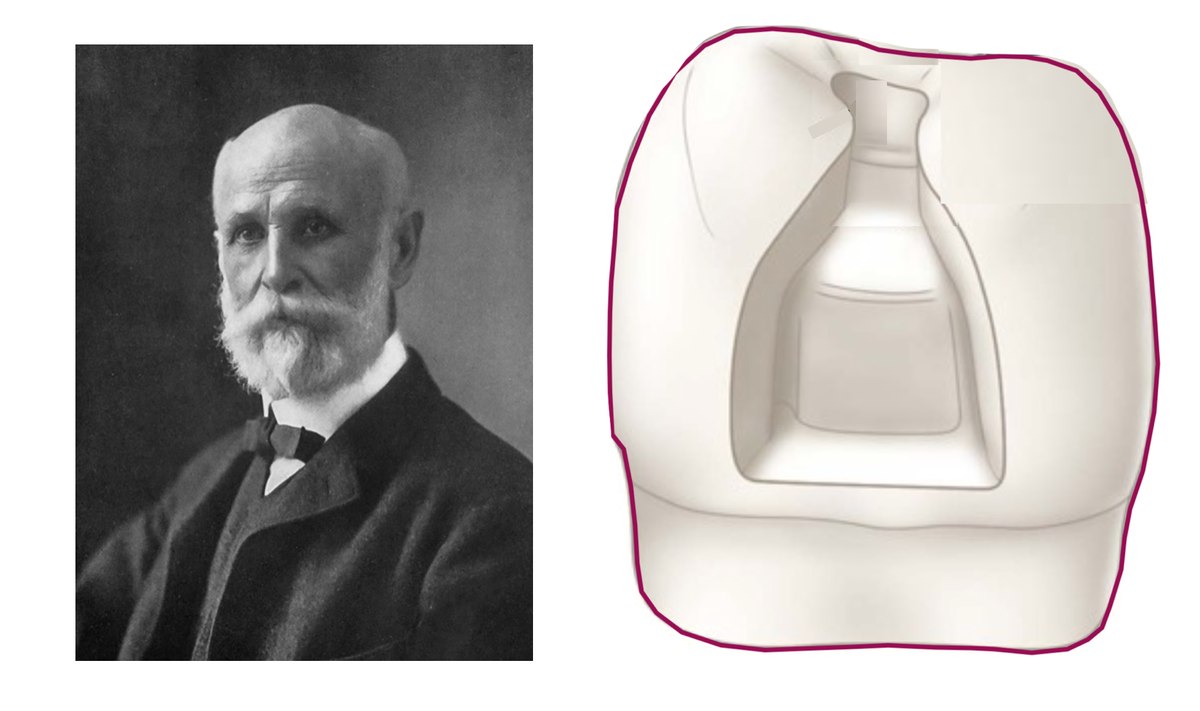
1908
Extension for prevention - for cavity preparation is introduced
Greene Vardiman Black, publishes Operative Dentistry. It includes the principle of cavity preparation, termed extension for prevention.
1913
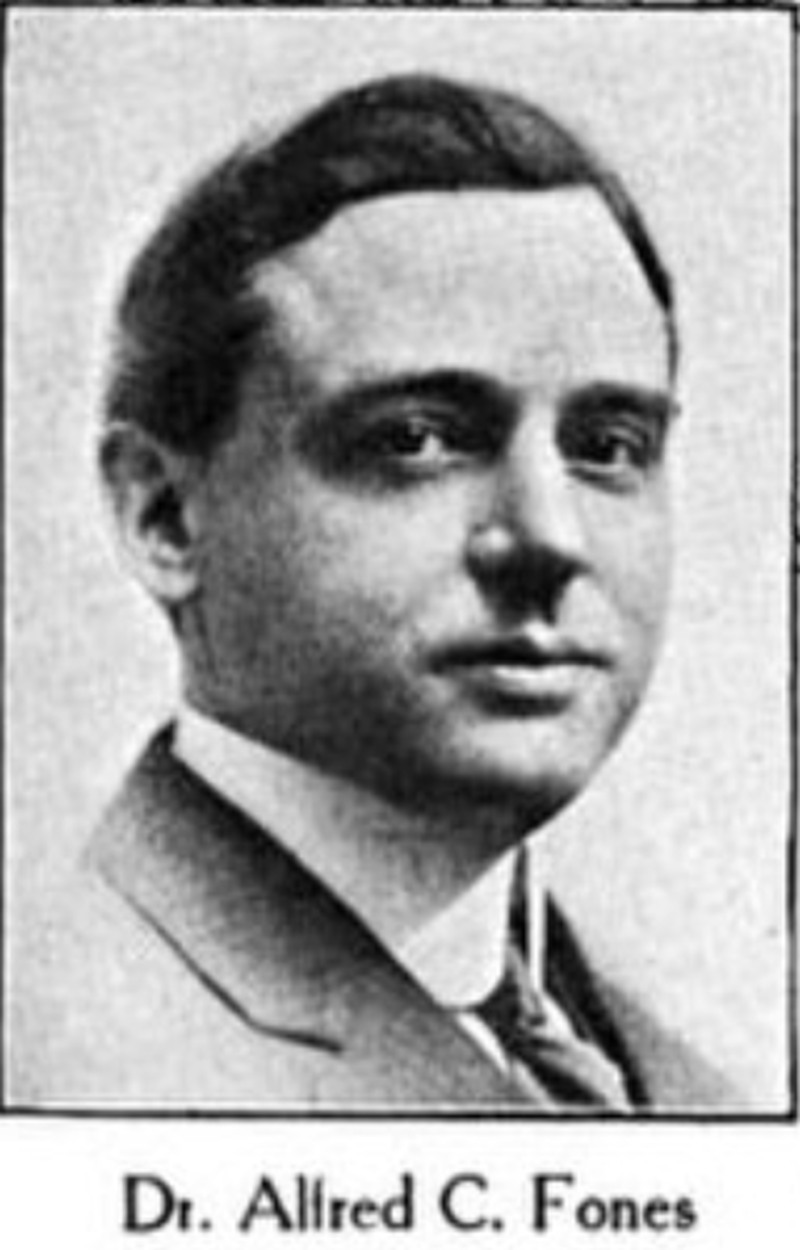
First Dental Hygiene Program established by Alfred C. Fones
Alfred C Fones of Bridgeport, CT opens a training program for dental hygienists. It is the first dental hygiene school. Dr. Fones, coined the term “dental hygienist.”
1919
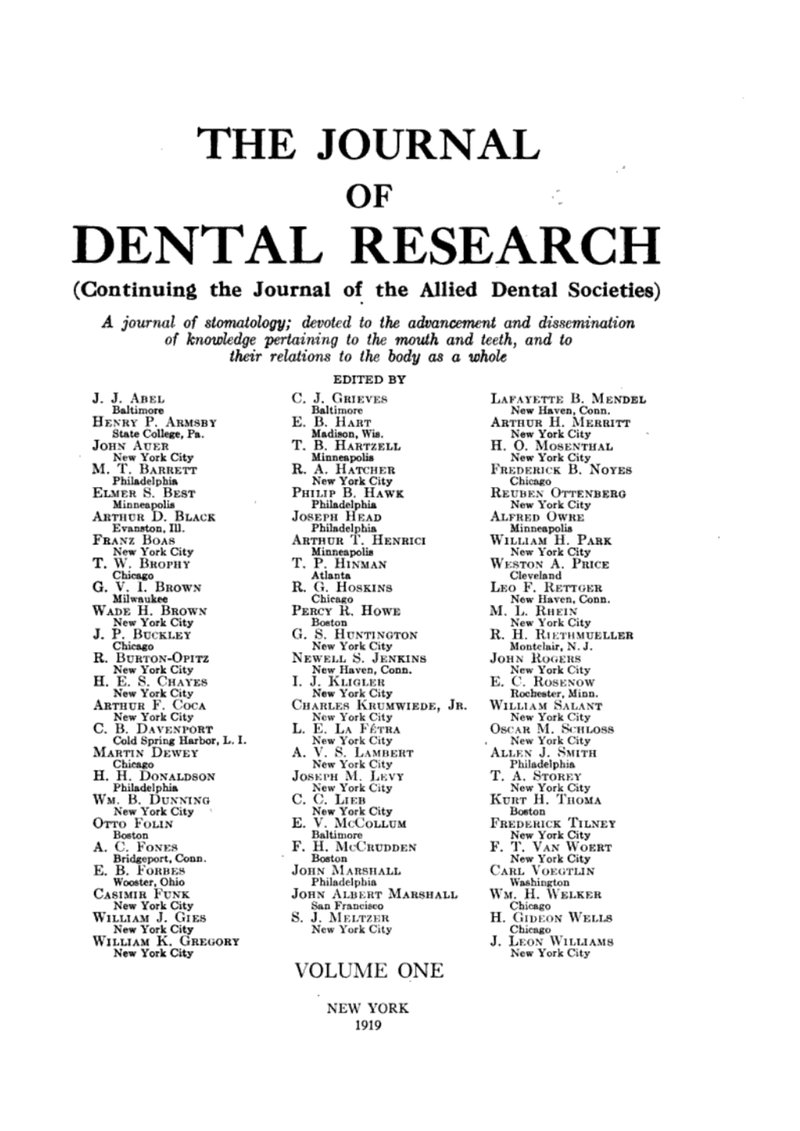
Journal of Dental Research established.
Establishment of the Journal of Dental Research. William J Gies, the father of modern dental education and research.
1926
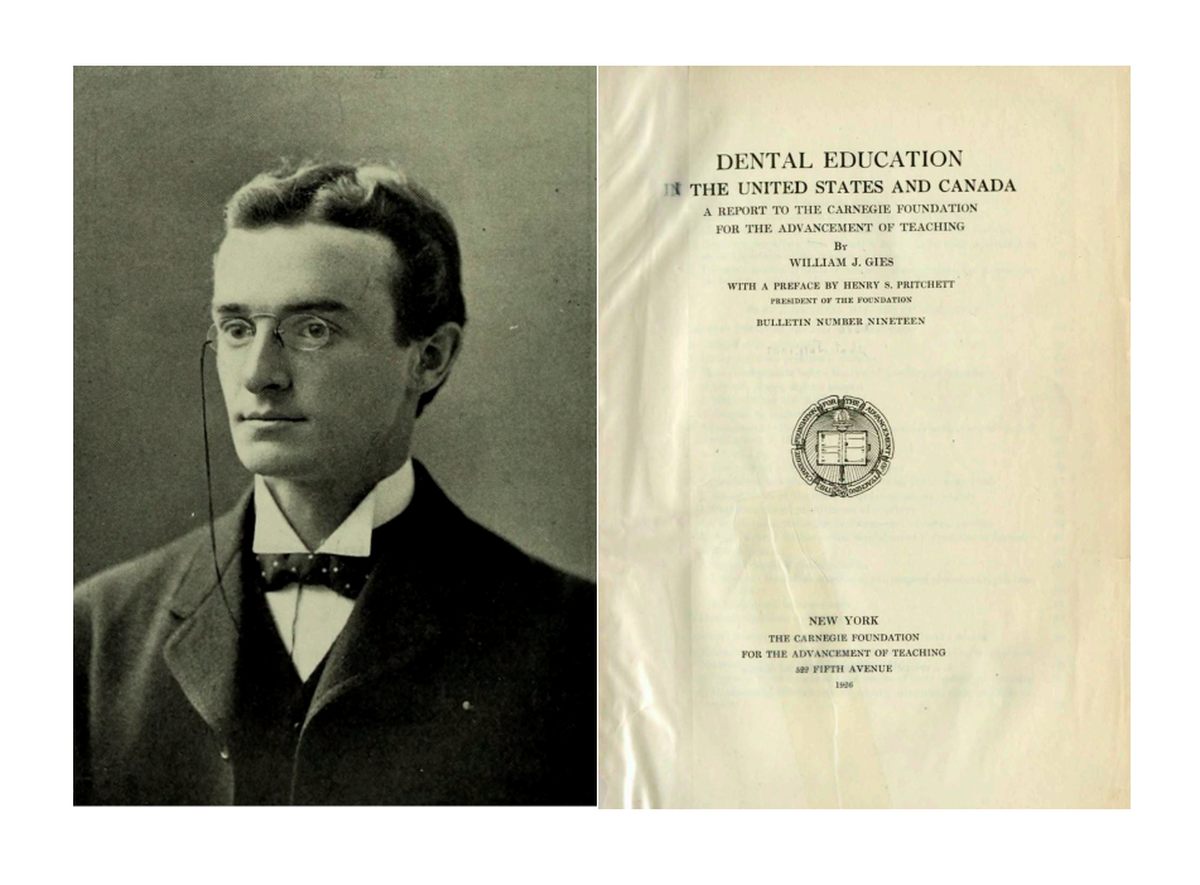
1926
The Gies Report
Dental Education in the United States and Canada also know as the Gies Report is published. It is a comprehensive study on US and Canadian dental education. Commissioned by the Carnegie Foundation for the Advancement of Teaching and chaired by William J Gies, a professor of biochemistry at Columbia University, New York.
1929
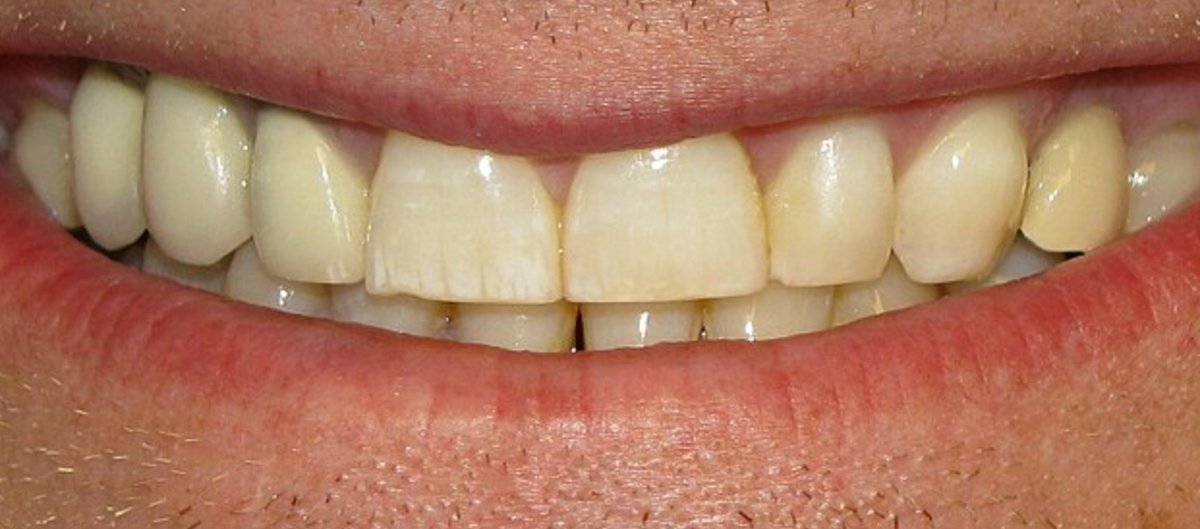
1929
The link between fluoride and caries resistance is established
Frederick McKay establishes a link between fluoride, caries resistance and mottled enamel
1930
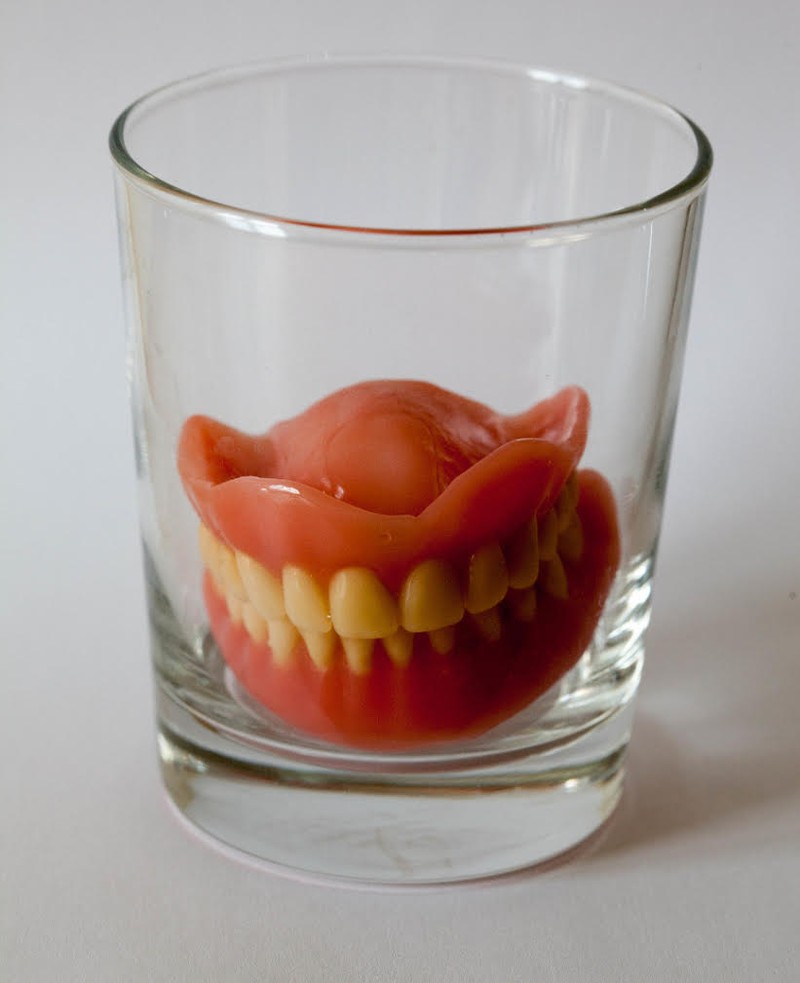
Methacrylate is introduced as a denture base material.
Walter Bauer, a German chemist at Rohm and Haas Company in Darmstadt patents methacrylic esters as a new denture base material.
1934

1934
National Dental Board Examinations
The National dental Boards (NDBE), Part I and Part II are introduced in the US.
1945
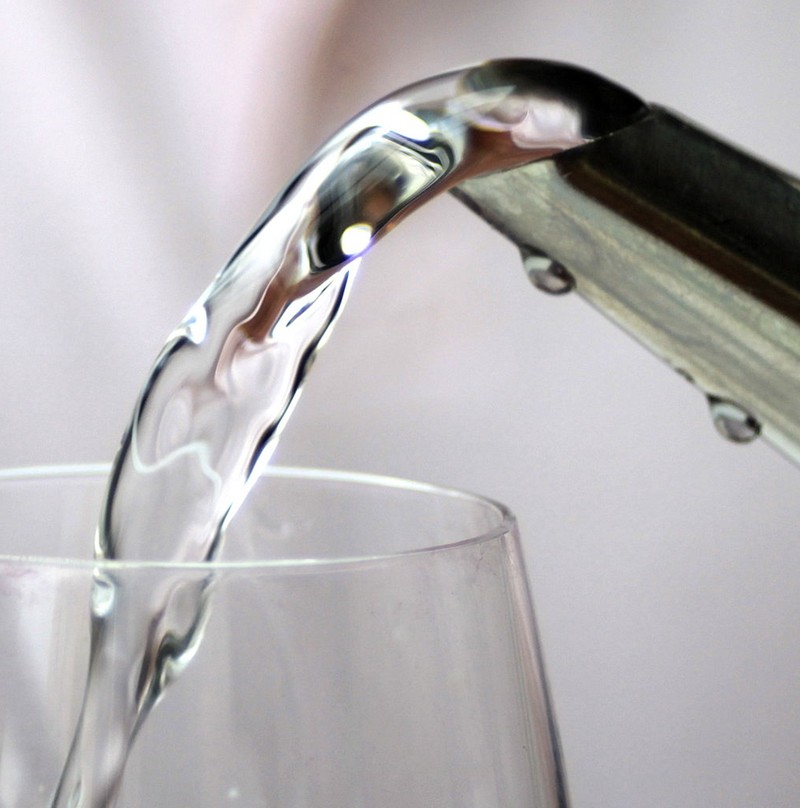
Water fluoridation is introduced
The first city to introduce water fluoridation in the US is Grand Rapids, Michigan. Fluoride acts as a preventive measure against tooth decay
Image in Wikimedia Commons
1948
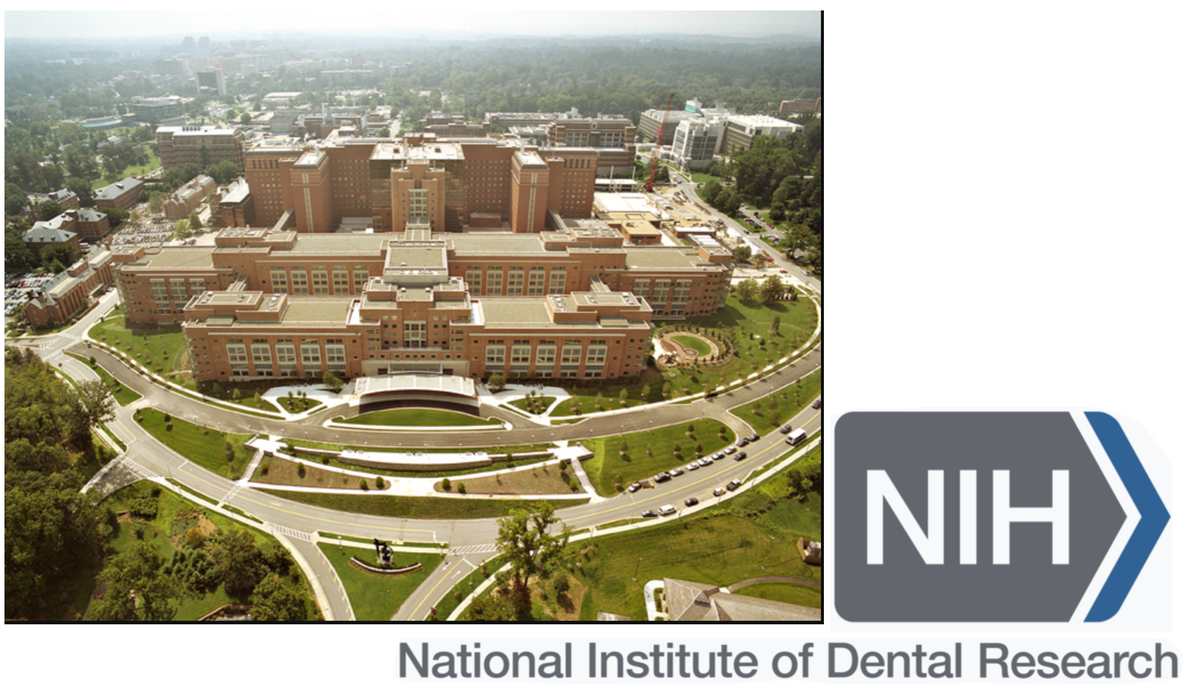
1948
The National Institute of Dental Research
NIH opens its third Institute, the National Institute Of Dental Research (NIDR).
Image in Wikimedia Commons
1950
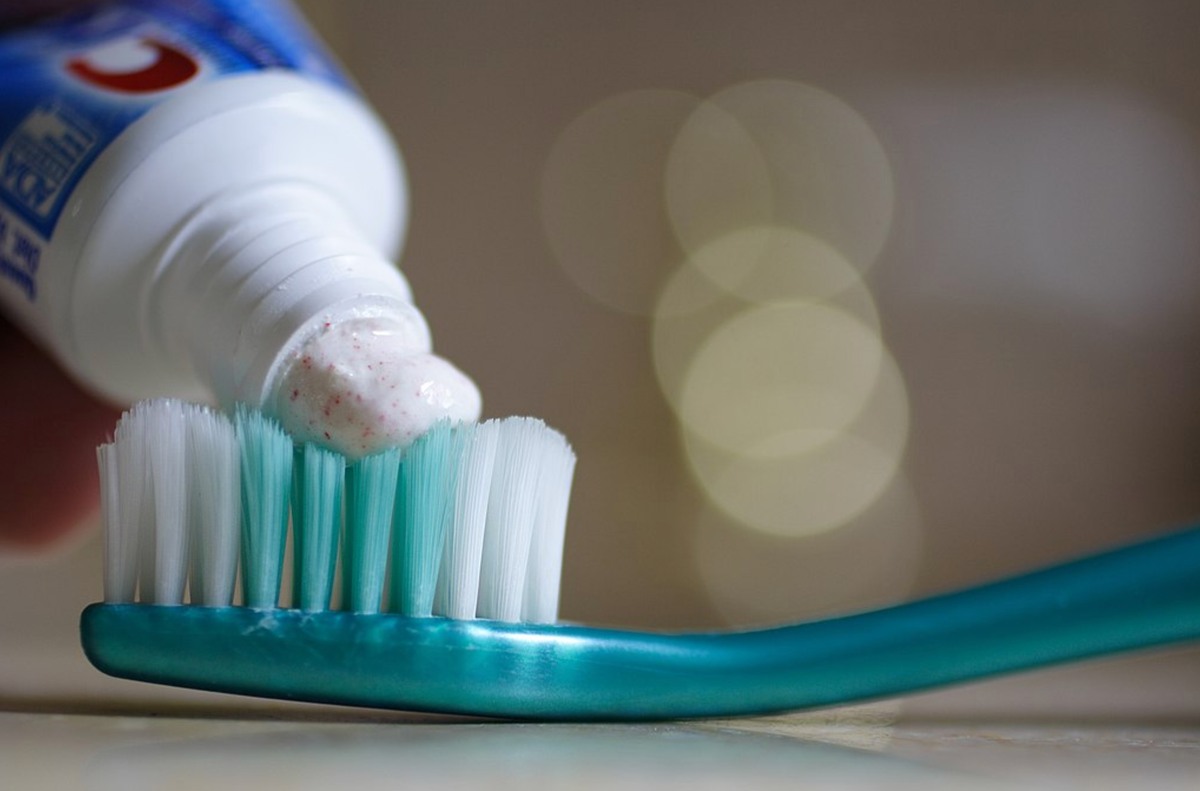
1950
Toothpaste containing fluoride is introduced.
Image in Wikimedia Commons
1955
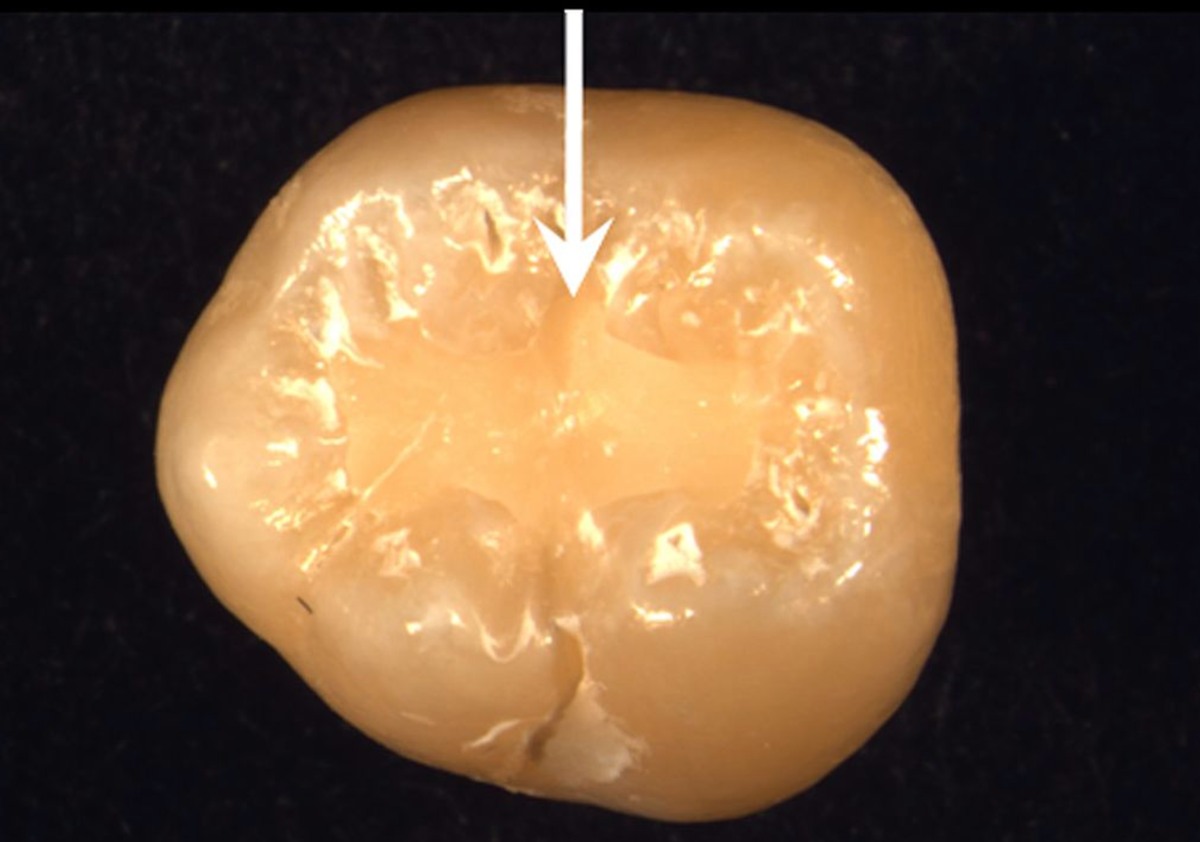
Composite Resin as restorative material
Composite resins with bonding agents are introduced to dentistry. Started with the Swiss chemist, Hagger at the DeTrey/Amalgamated Dental Company with a dentin bonding agent, it was Michael Buonocore that established the field of acid etch technique for bonding to both dentin and enamel.
Image in Wikimedia Commons
1955-1957

1955-1957
High speed turbine
In 1955 Ivar Norlen, a Swedish dentist demonstrates an air-rotor-driven high speed drill, the Dentalair, that could be regulated for a maximum speed of 140,000 rpm. 1957 - The S.S. White company introduced a fix-speed air-driven turbine, the Airotor invented by John Victor Borden, a Washington dentist.
Image Courtesy British Dental Museum.
1955
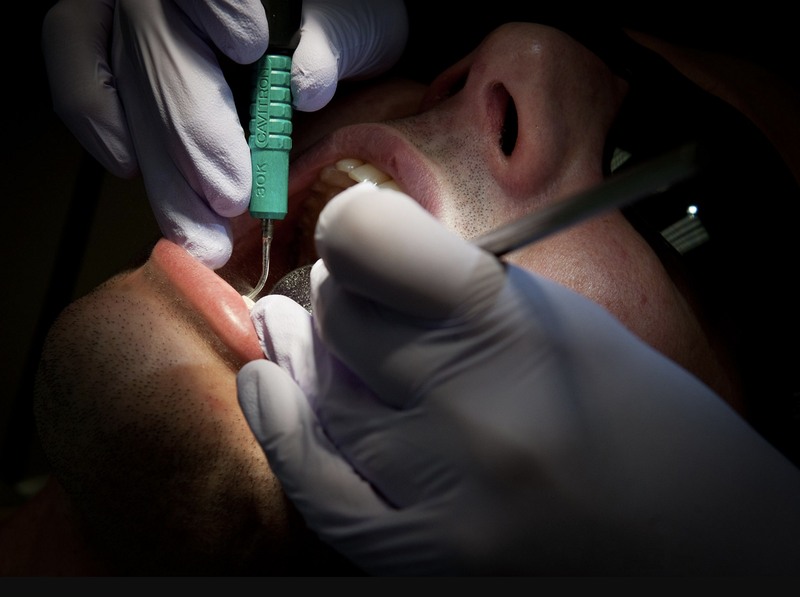
Cavitron
The ultrasonic device, Cavitron is introduced.
Image in Wikimedia Commons
1960
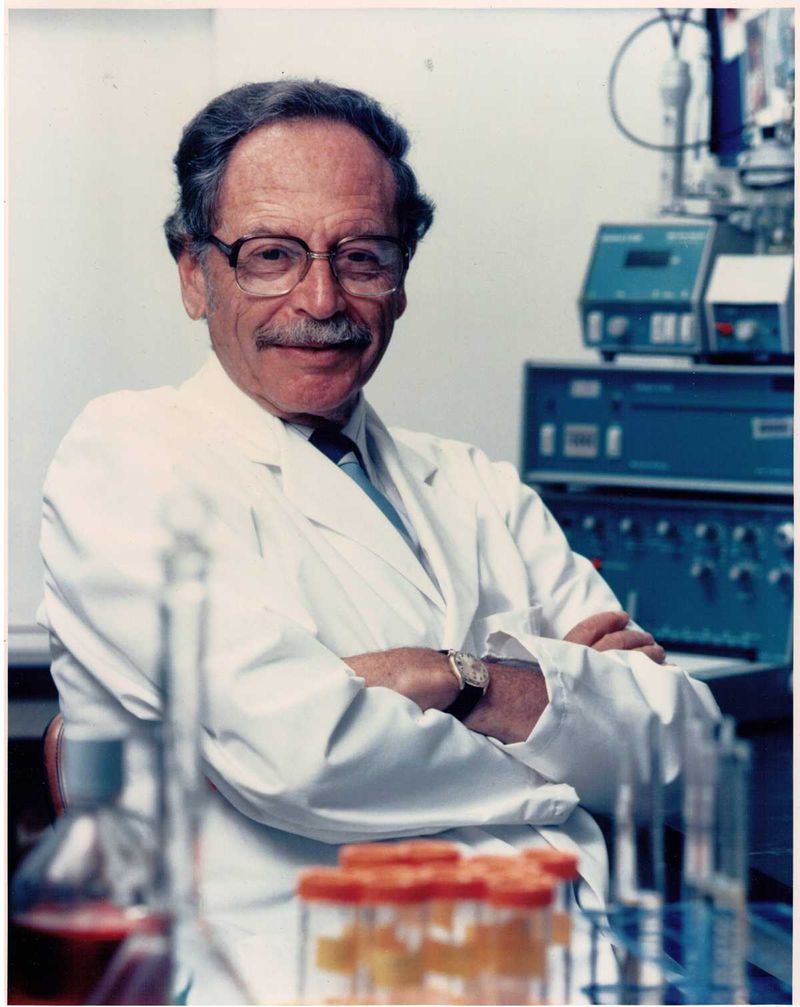
Saliva as a diagnostic tool
In the early 1960s, saliva was first mentioned as a diagnostic tool in papers authored by Columbia University’s Irwin Mandel.
Courtesy Dr. Irwin Mandels family.
1980s
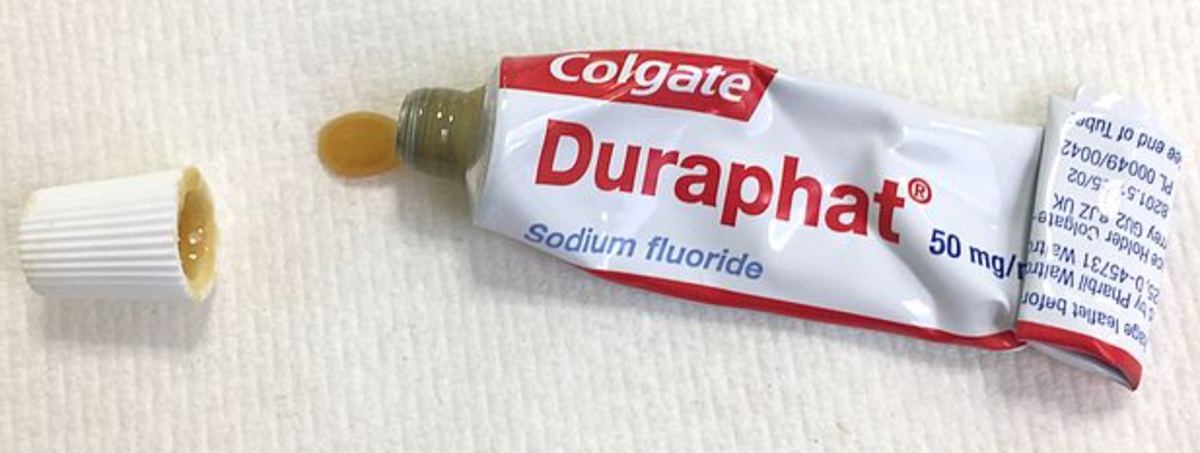
1980s
Dental varnish
The dental varnish is introduced in Europe, Canada and Scandinavian countries. It is a highly concentrated fluoride film that is applied onto tooth surfaces, usually in children, to prevent dental decay.
Image in Wikimedia Commons
1980
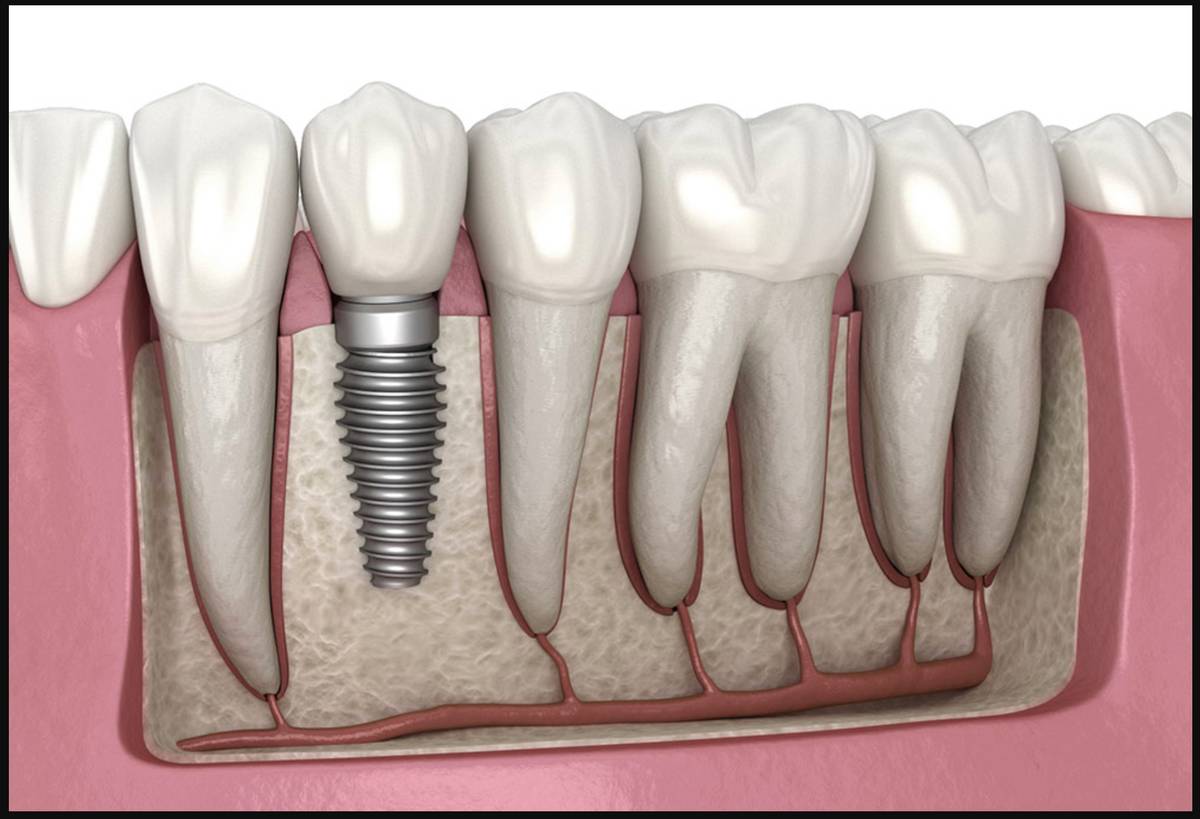
Osseointegrated Implants
Per-Ingvar Brenemark introduces the osseointegration technique, the basis of successful implant placement.
1980s
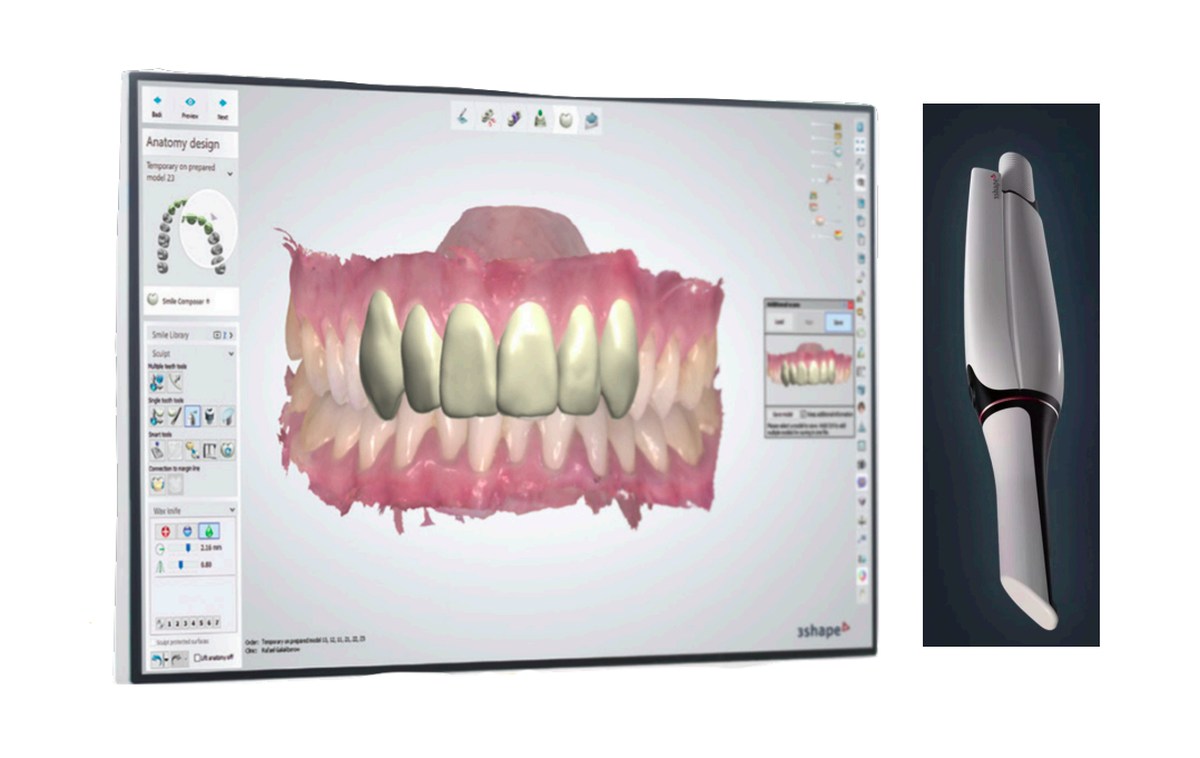
1980s
Digital impression
The digital impression is available since the 1980s but it becomes mainstream only in 2013.
1984
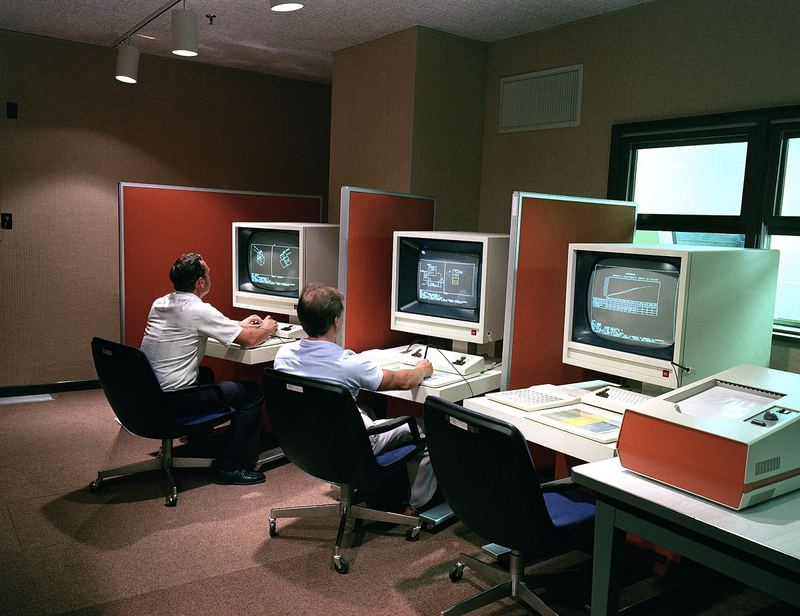
CAD-CAM
Francois Duret from University of Southern California invented computer-aided design/computer-aided-manufacturing (CAD-CAM) technology for design of inlays. It will take two decades to become mainstream in crown design in dentistry
1987
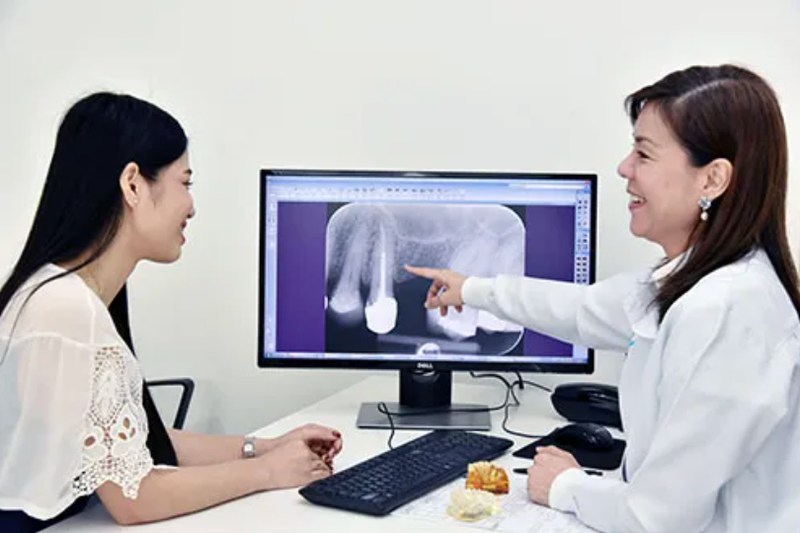
Digital radiography
Francois Mugnon, a French scientist introduced digital radiography to dentistry. He called it the Radio VisioGraphy (RVG) system.
Courtesy Bangkok International Dental Center.
1995
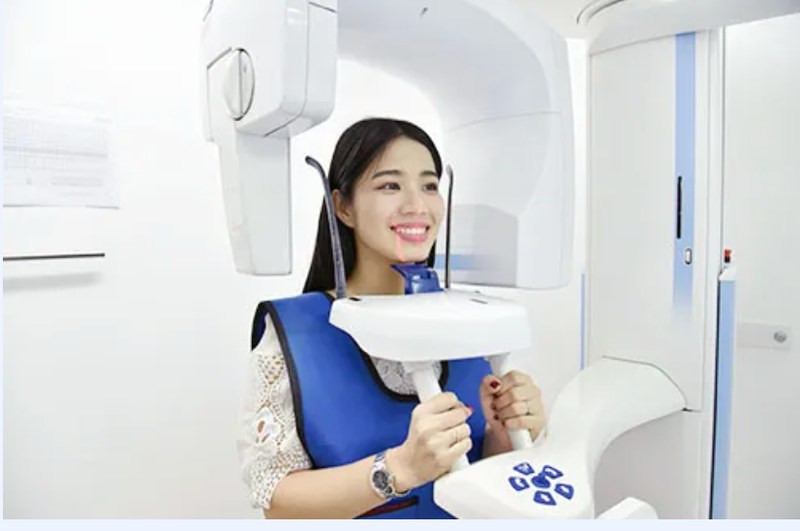
Digital panoramic imaging
The first digital panoramic system in dentistry is introduced to the market by the French Signet company.
Courtesy Bangkok International Dental Center.
1997

Lasers in dentistry
Erbium YAG laser is approved for dental use.
1997

1997
Invisalign
Invisalign is created by Zia Chishti and Kelsey Wirth in San Jose, California.
2000
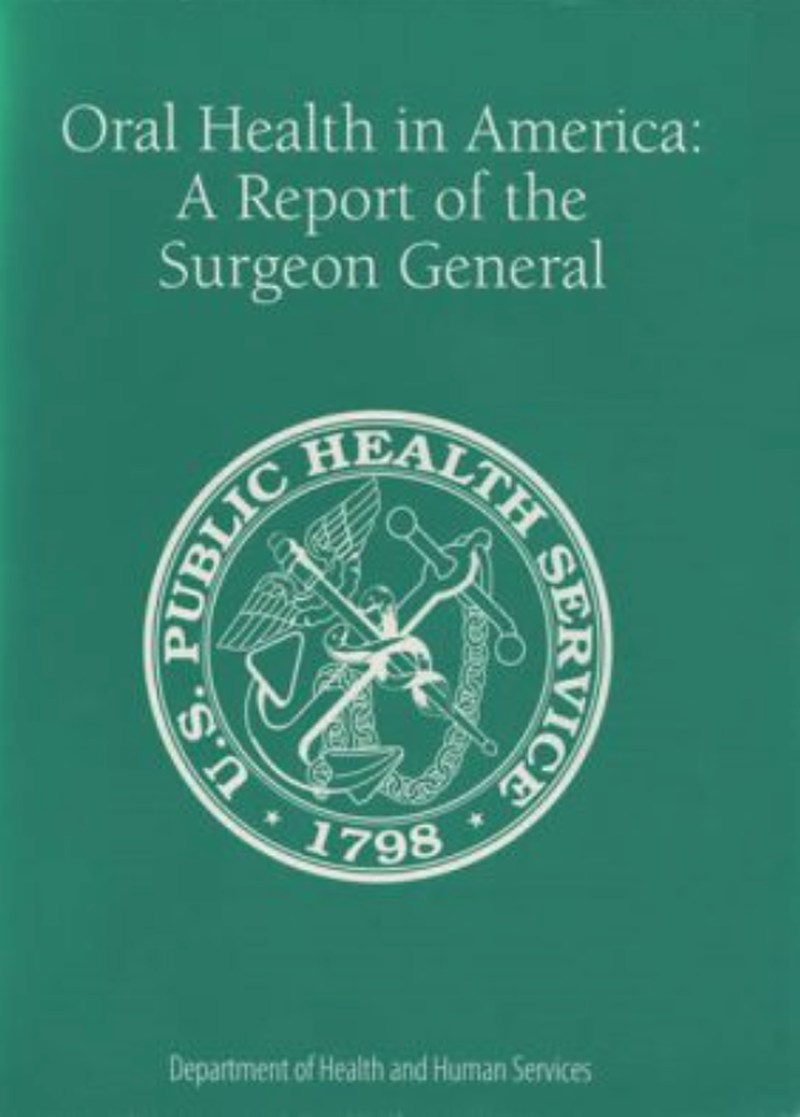
The first Surgeon General's Report on Oral Health is released.
2007
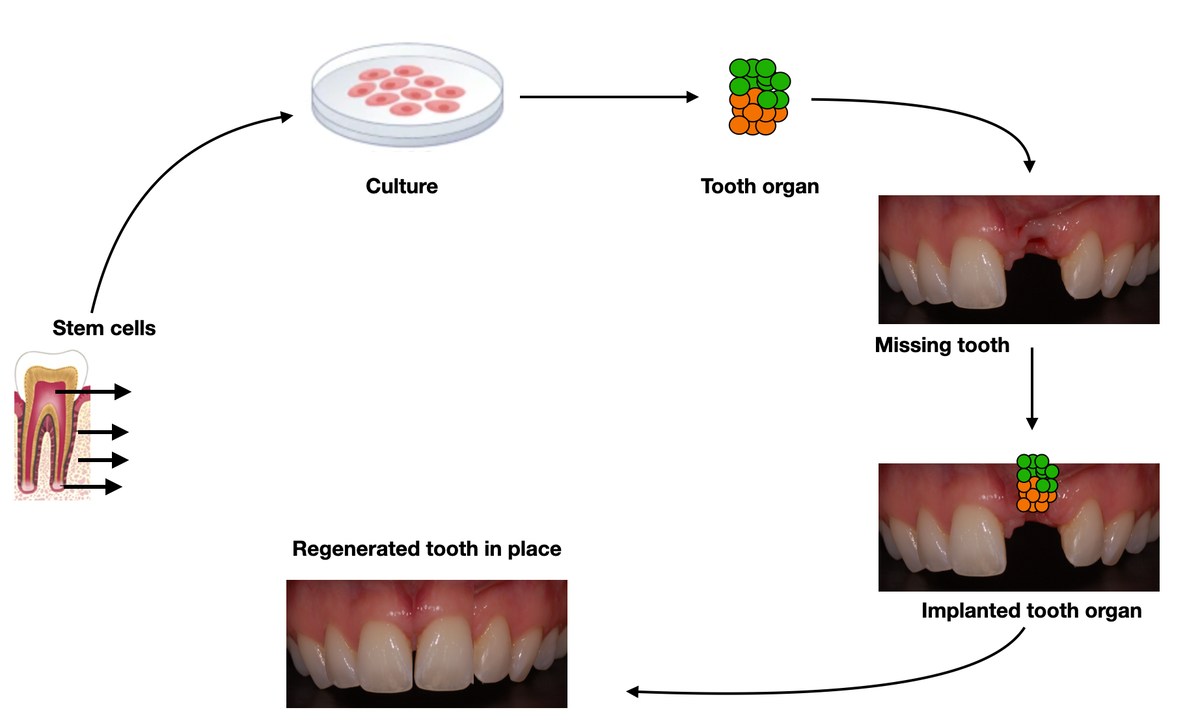
2007
First bioengineered tooth germ
Nakao Kazuhisa and Takashi Tsuji’s group create a bioengineered tooth germ capable of controlled tooth regeneration.
https://doi.org/10.1186/2045-9769-3-8
2010
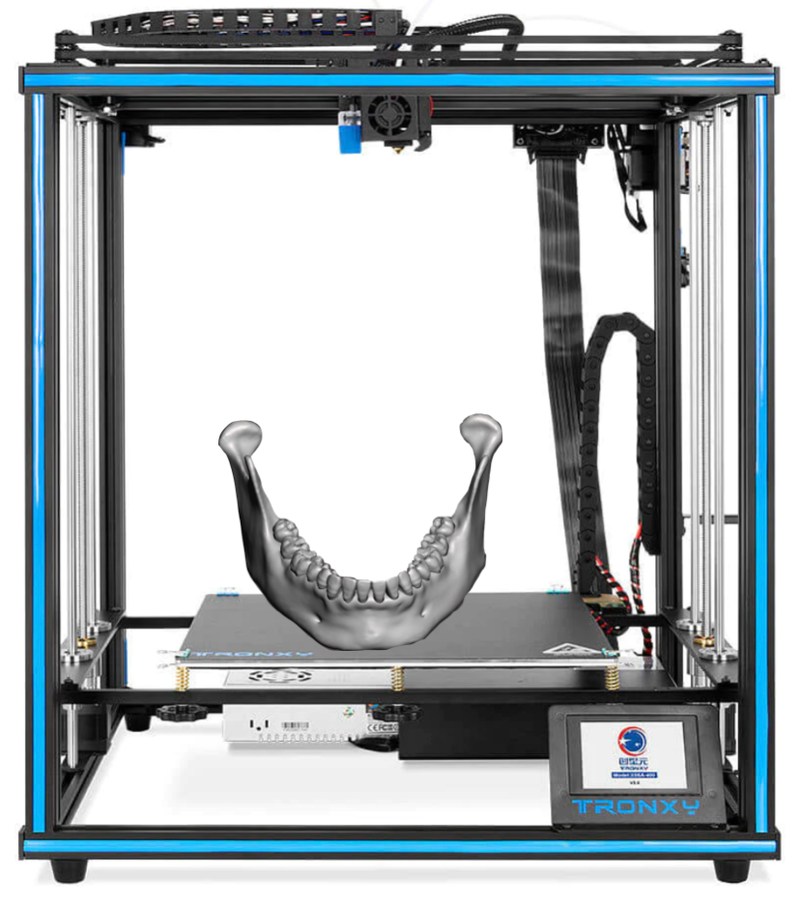
3d printing in dentistry
3D printing is introduced for bone/bone-substitutes and to create scaffolds for periodontal tissue engineering, setting the stage for a new field, Oral Regenerative Science.
2020

2020
On-line education using Zoom
On line education introduced during the COVID-19 pandemic takes off.